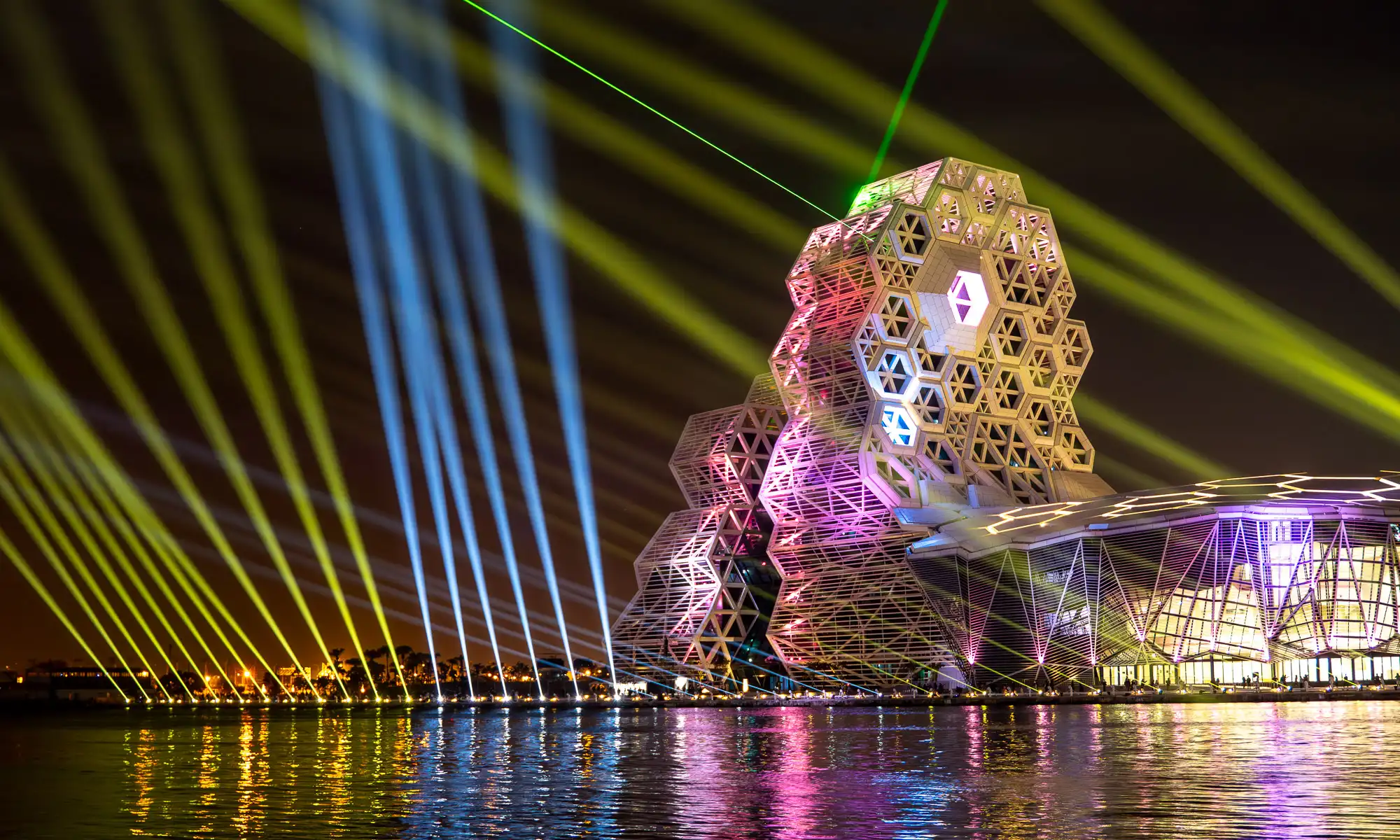An Insider’s Guide to Downtown Kaohsiung – Urban Arts and Culture
As Taiwan’s second largest city, Kaohsiung is a city that offers a rich selection of cultural and historic attractions, a trendy arts scene, and tropical coastal beauty.
Visit the beautiful and historic neighborhoods of Sizihwan and Hamasen to dive into the city’s past before exploring its convenient beaches. Dive deep into Kaohsiung’s past at the Hamasen Railway Cultural Park or take a nostalgic sip of coffee at the trendy and historic Hamasen 1921 cafe, located in the a century old bank.
Then either take a walk or ride a ferry to explore the adjacent coastline, from the picturesque coastal coves of Sizihwan to the tourist beaches of Cijin Island.
Art and design aficionados should also make sure to check out, The Pier 2 Art Center and Weiwu Mimi Street Art Village, which stand as beacons of Kaohsiung’s contemporary art scene, as well as the National Kaohsiung Center for the Arts and the mesmerizing Dome of Light at Formosa Boulevard Station both of which celebrate the city’s pursuit of avant-garde design.
Whether you’re a history buff, a culture vulture, or simply in search of urban beauty, Kaohsiung promises an unforgettable journey.
Sizihwan
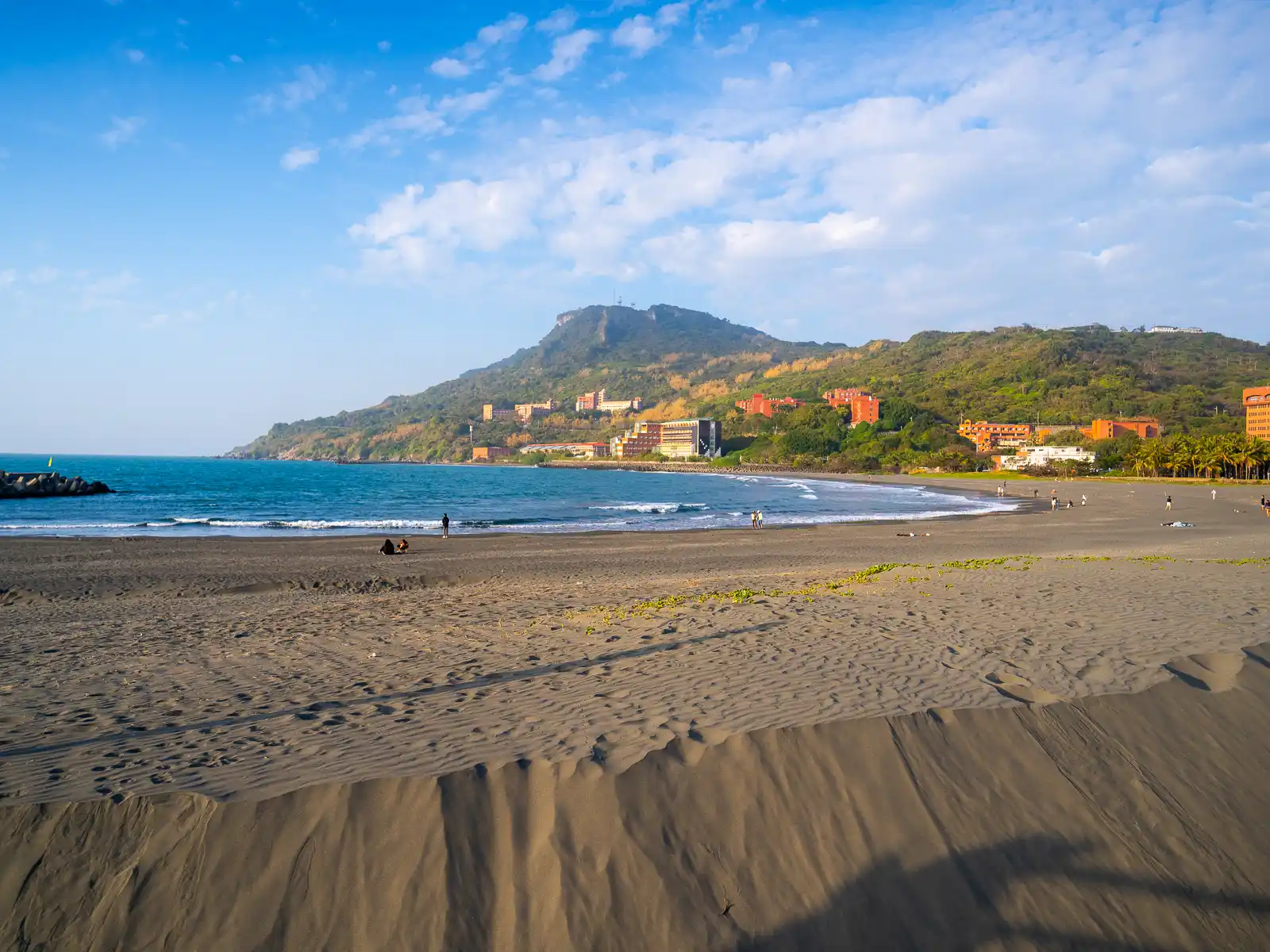
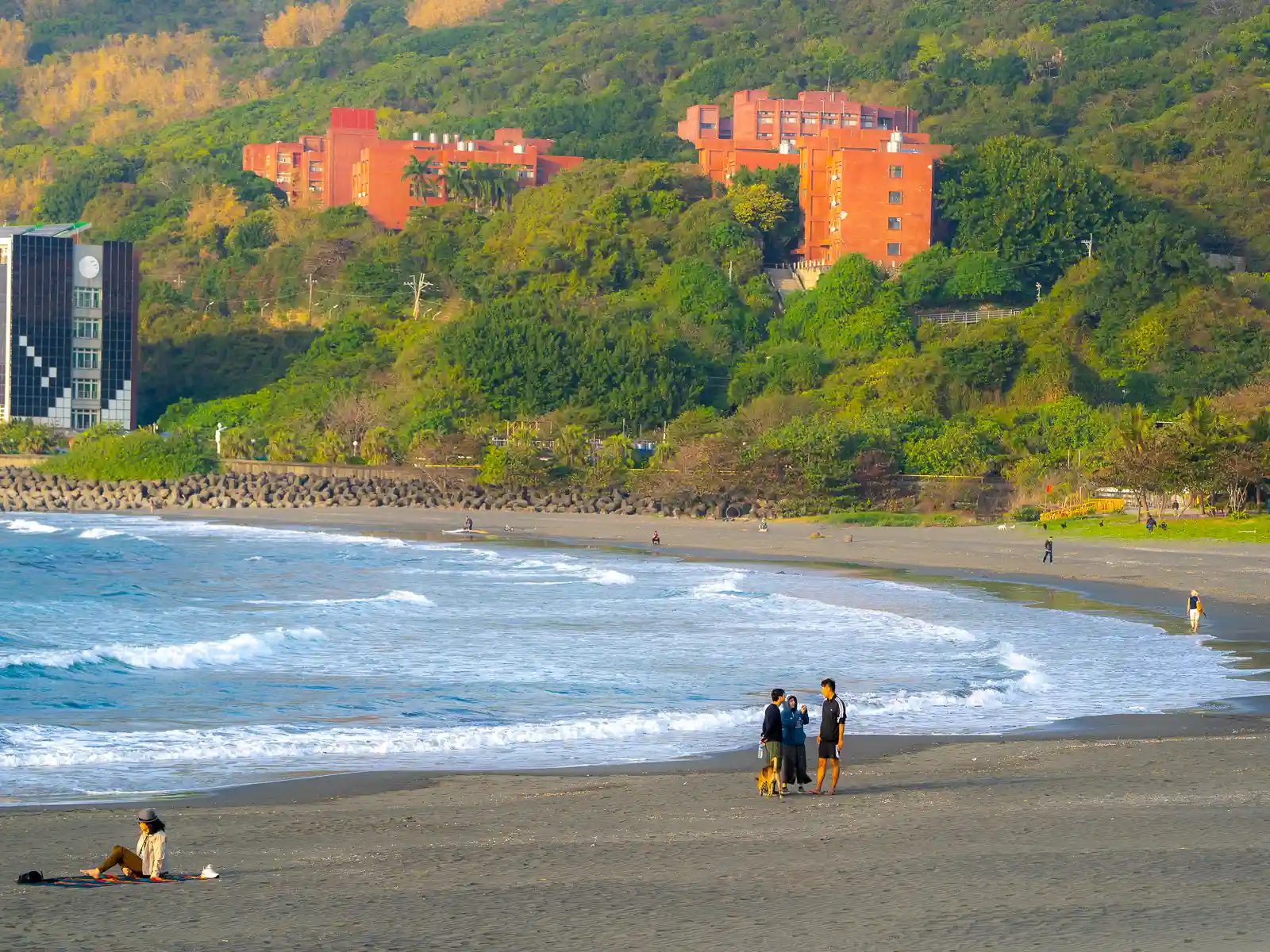
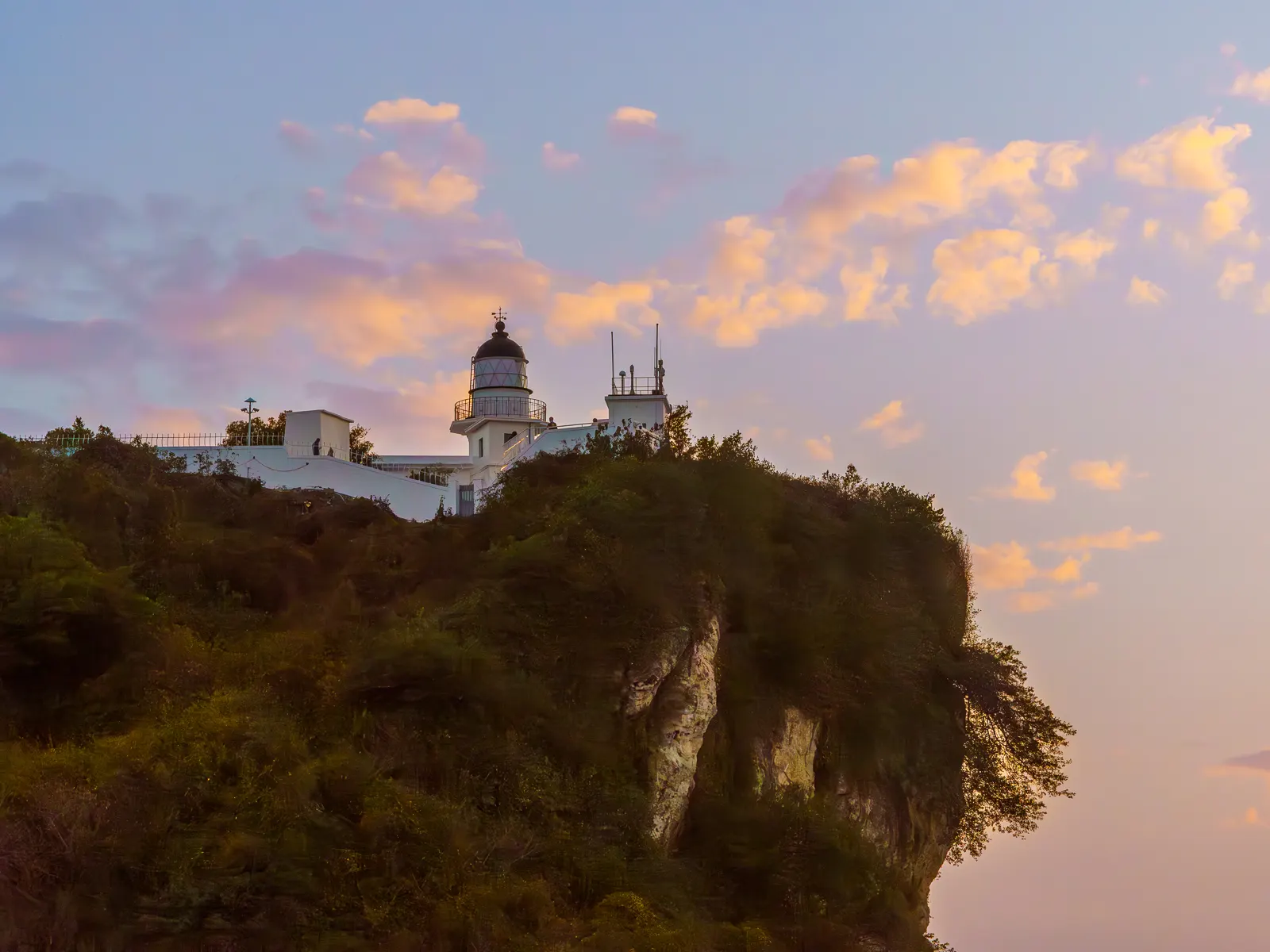
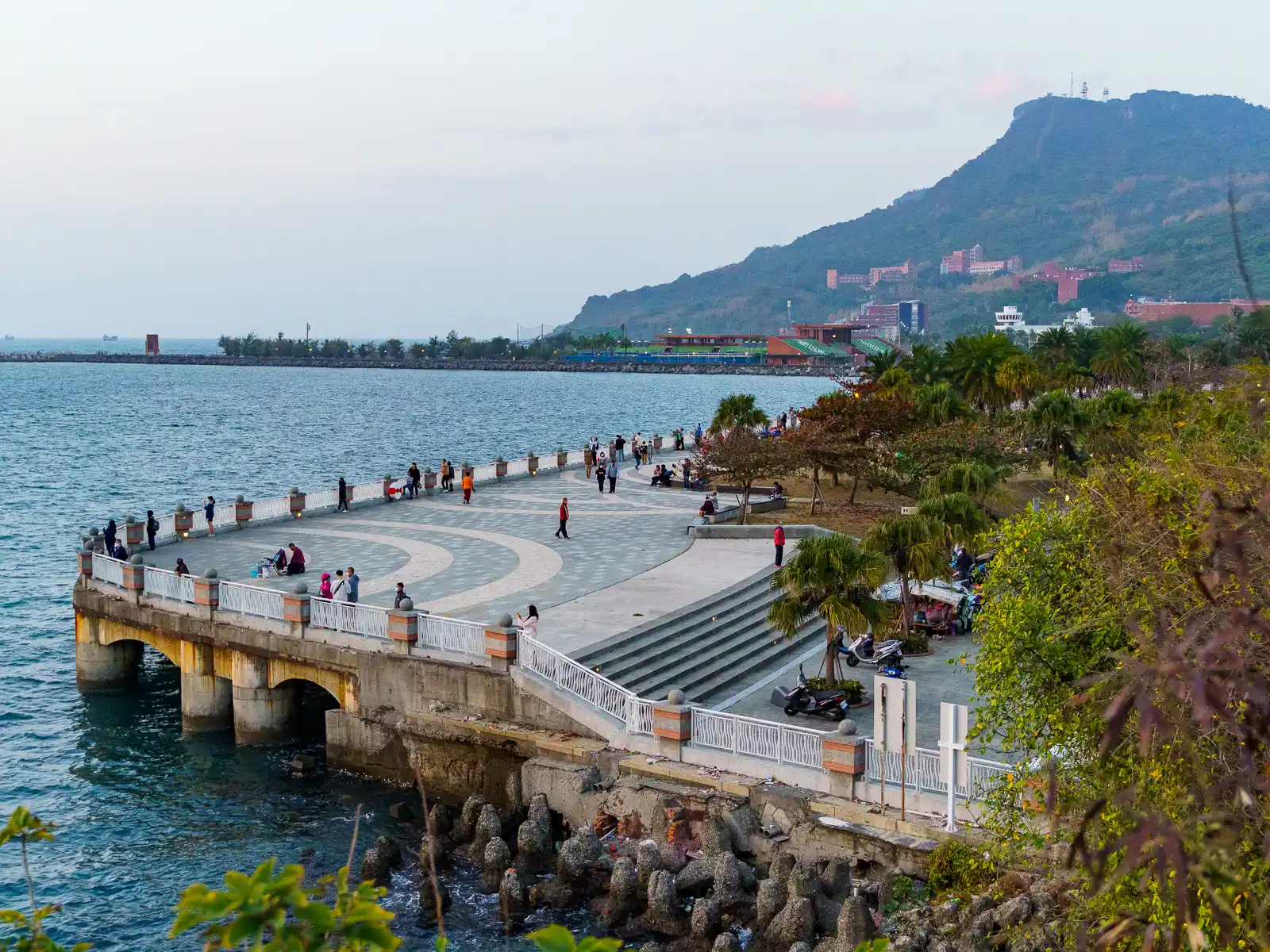
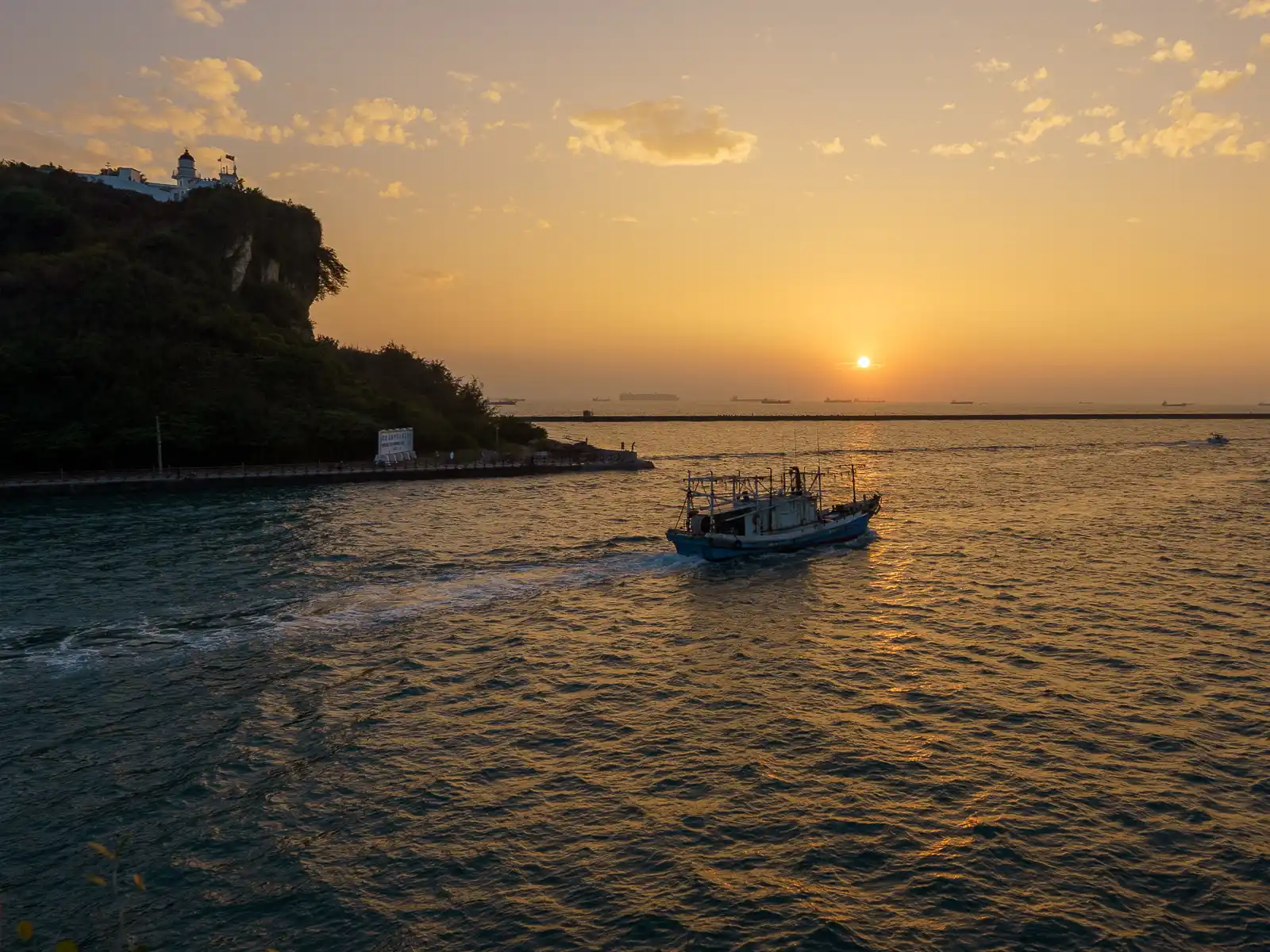
Sizihwan is a sightseeing area on the northern side of Kaohsiung Harbor with beaches, coral, historic sites, a harbor, and numerous small eateries including the famous Haizhibing shaved ice shop.
Accessible on foot or by bicycle from Sizihwan Station, the area has enough to do for an entire afternoon. A tunnel underneath Shoushan Mountain offers quick ocean access for those who do not wish to bike through the harbor and around the mountain.
On the coast, the British Consulate at Takow historic site and Sizihwan Tourist Beach are within walking distance of each other. There is also a ferry from Sizihwan across the harbor to Qijin District which has more beaches and fresh seafood restaurants.
The Pier 2 Art Center
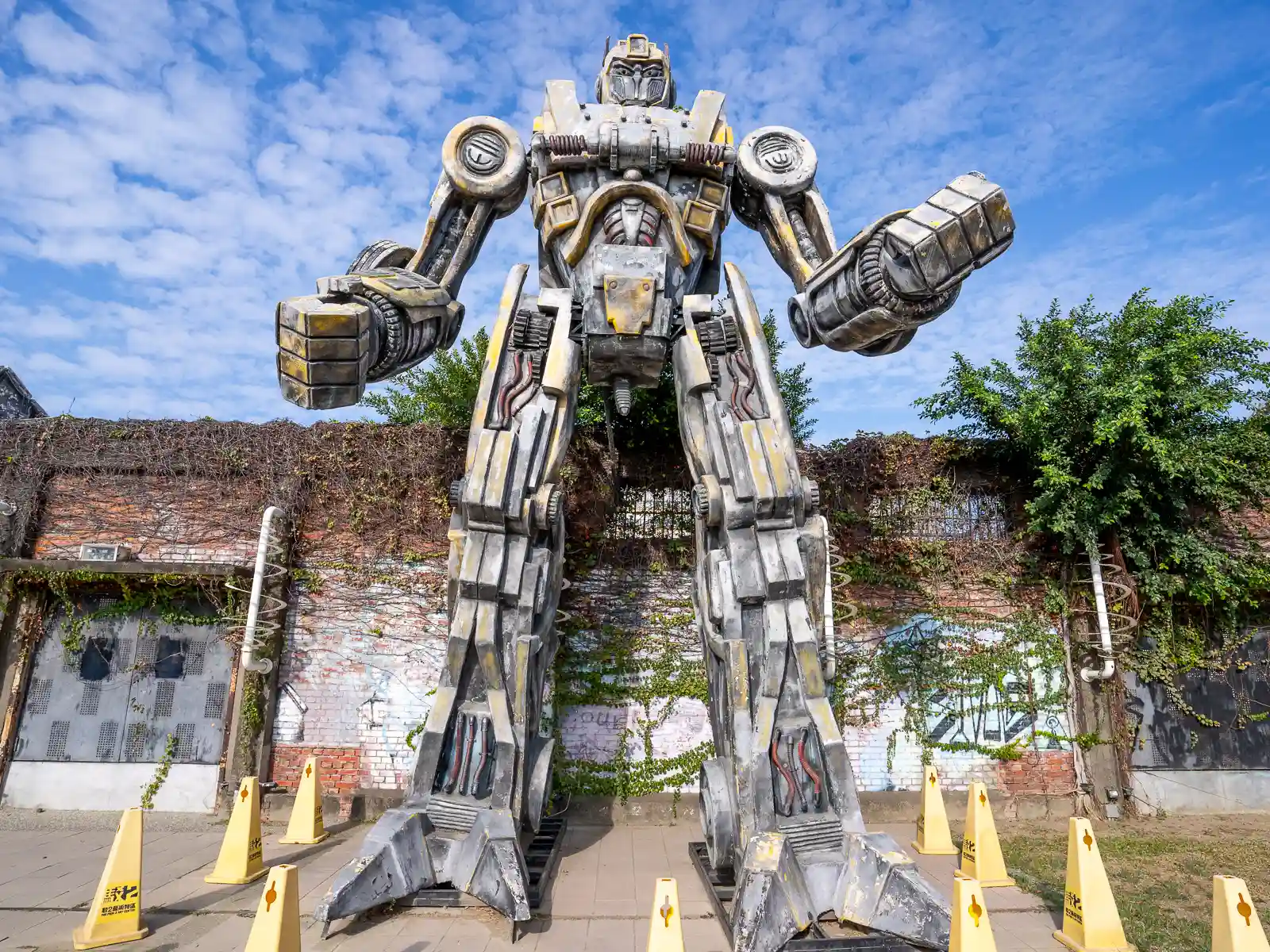
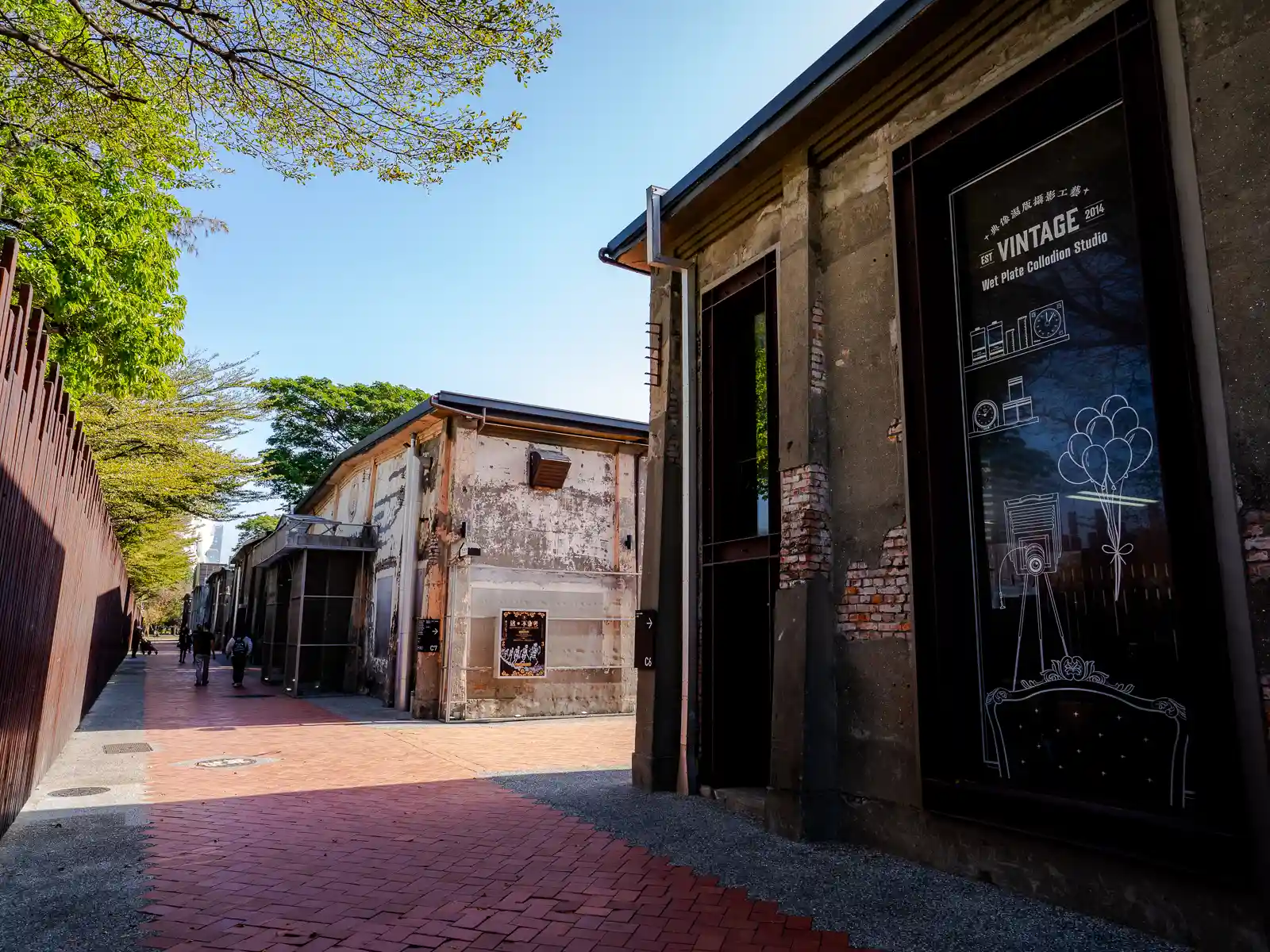
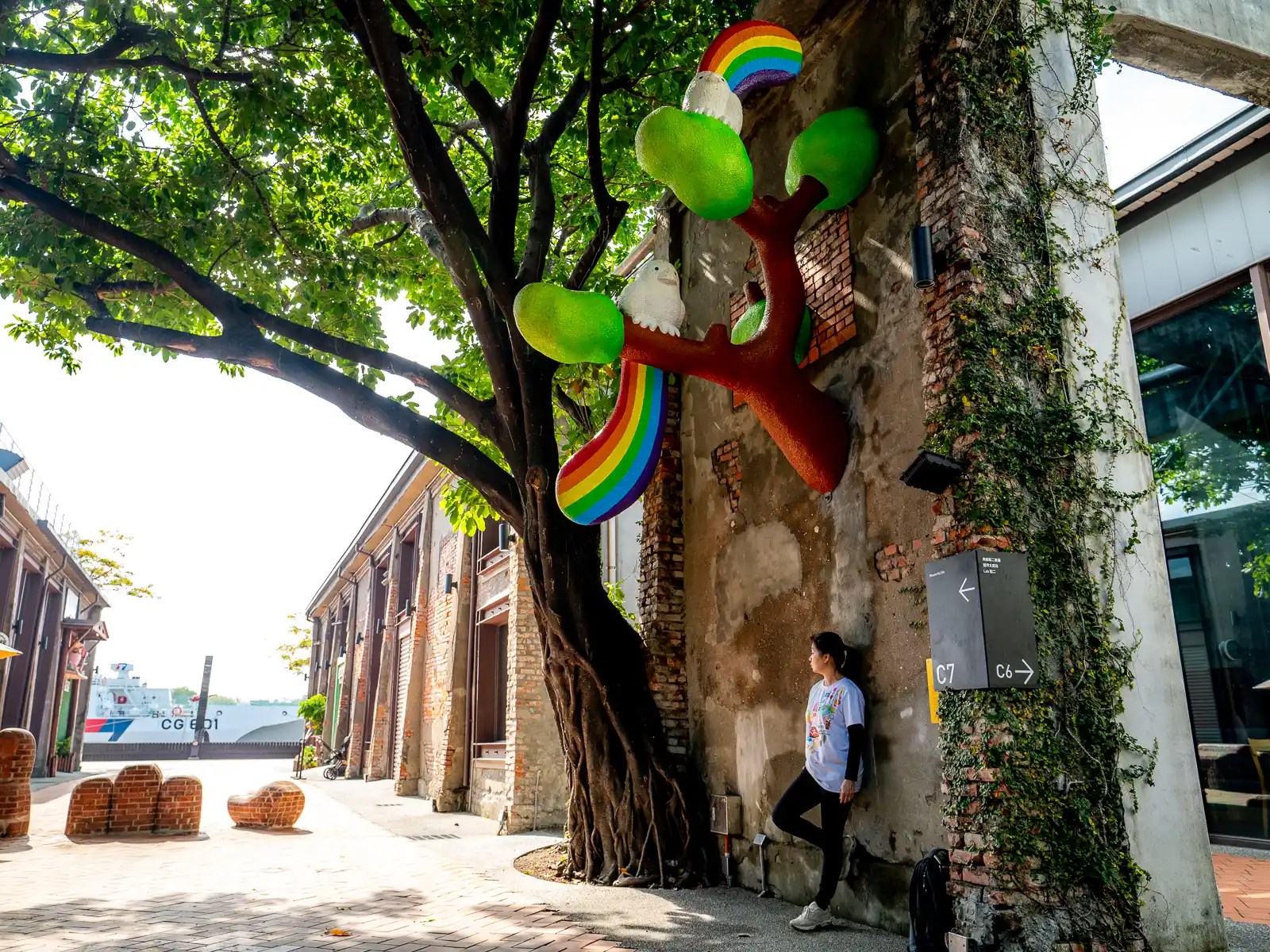
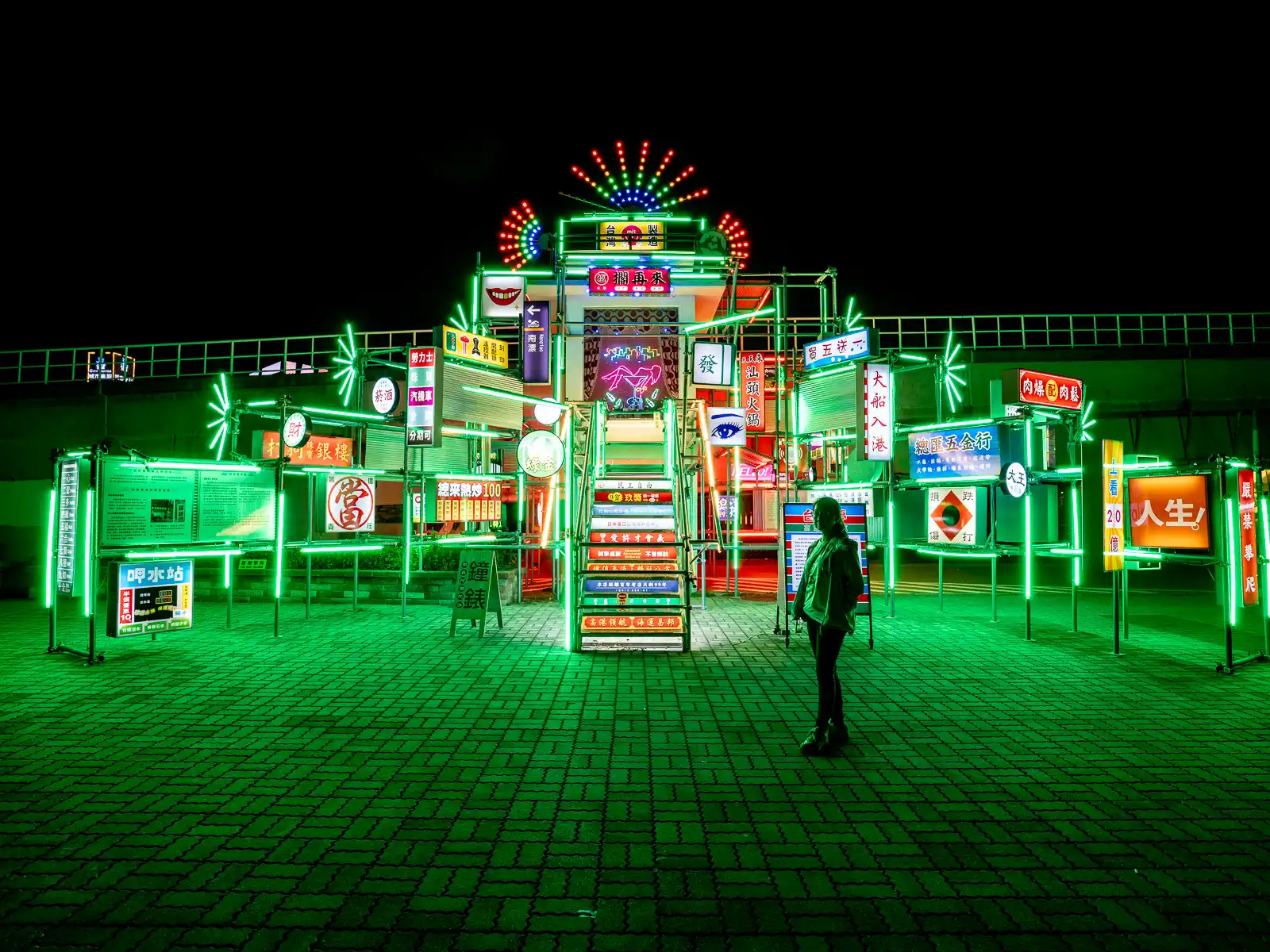
The Pier 2 Art Center is a series of repurposed industrial warehouses which have been renovated to house hundreds of shops, cafes, artist studios, music venues, and bars, and are home to countless murals, sculptures and other forms of street art.
The Art Center also features an artist-in-residence program and hosts exhibitions; recent exhibitions have dealt with dreams, perspectives and designs in the fields of music, theater and culture. The area also welcomes public art, and street performances.
Kaohsiung Music Center
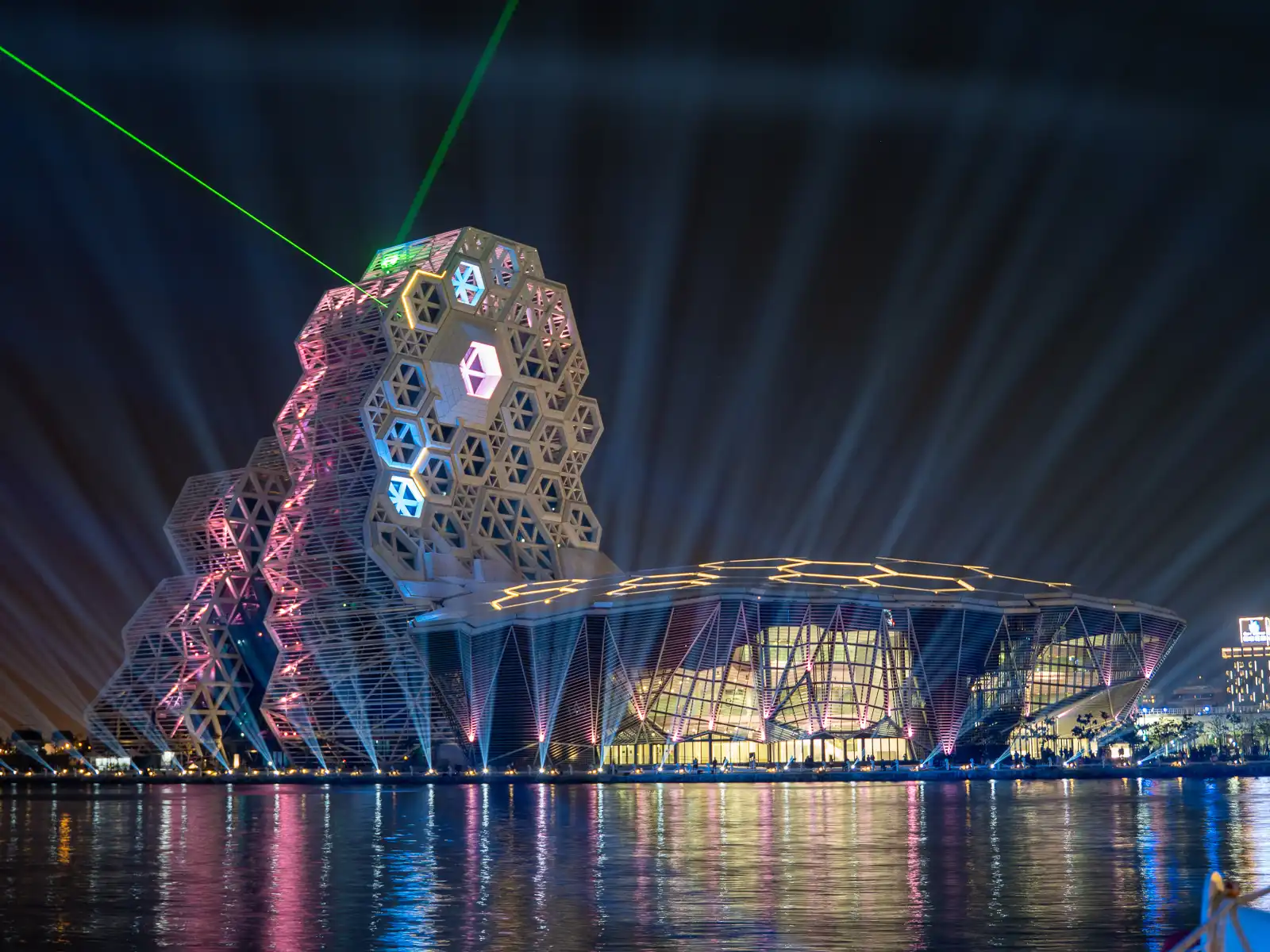
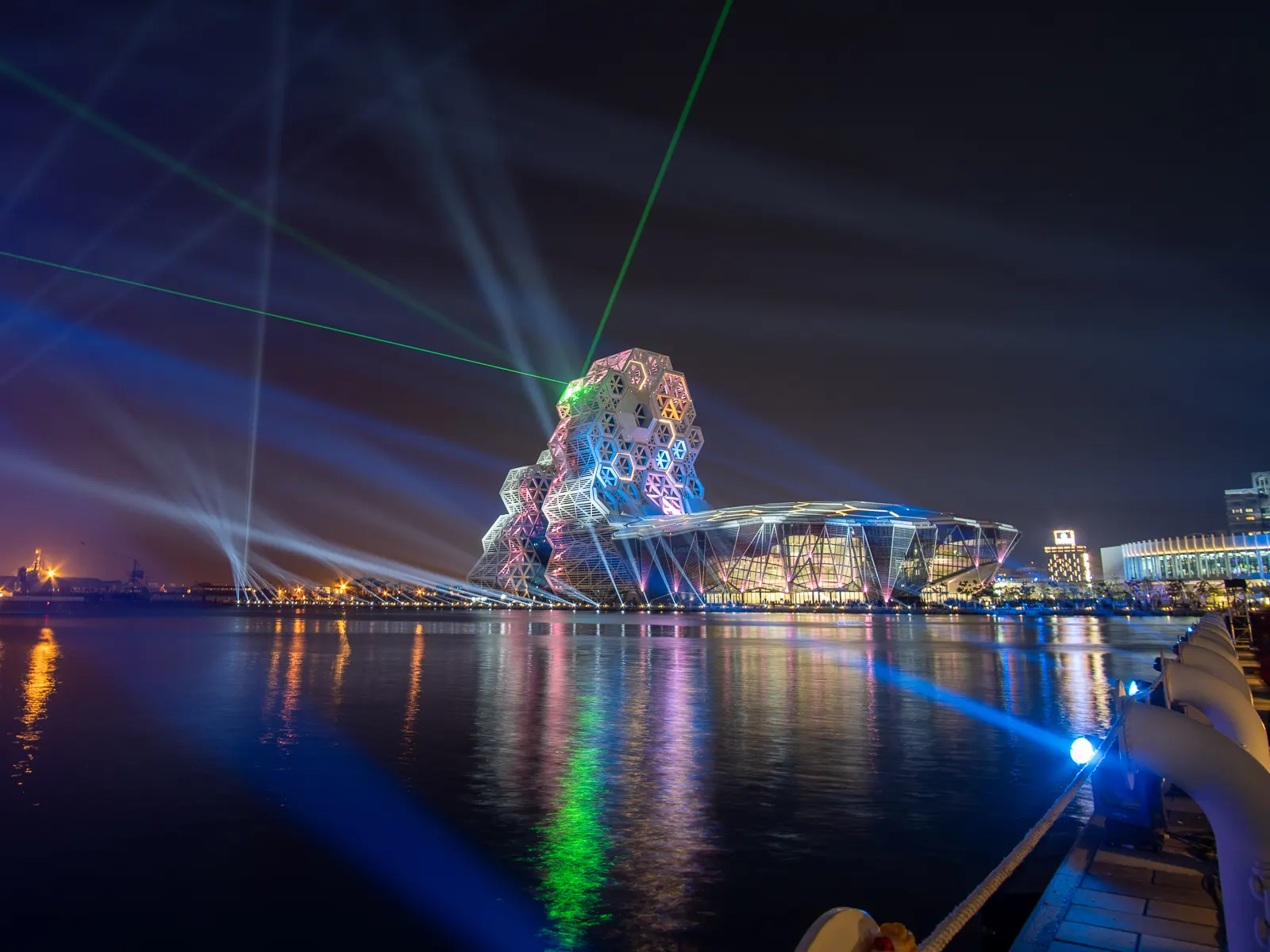
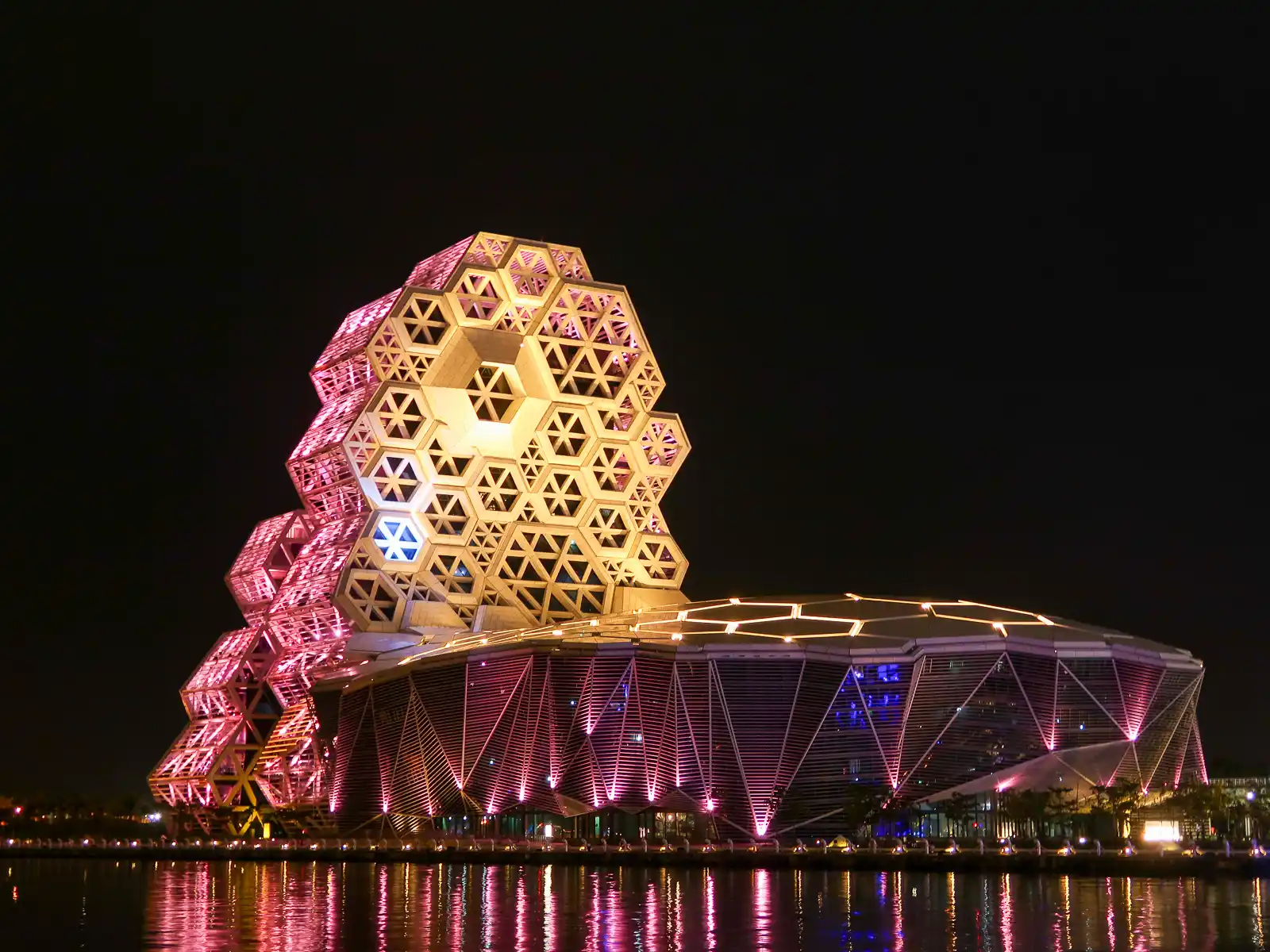
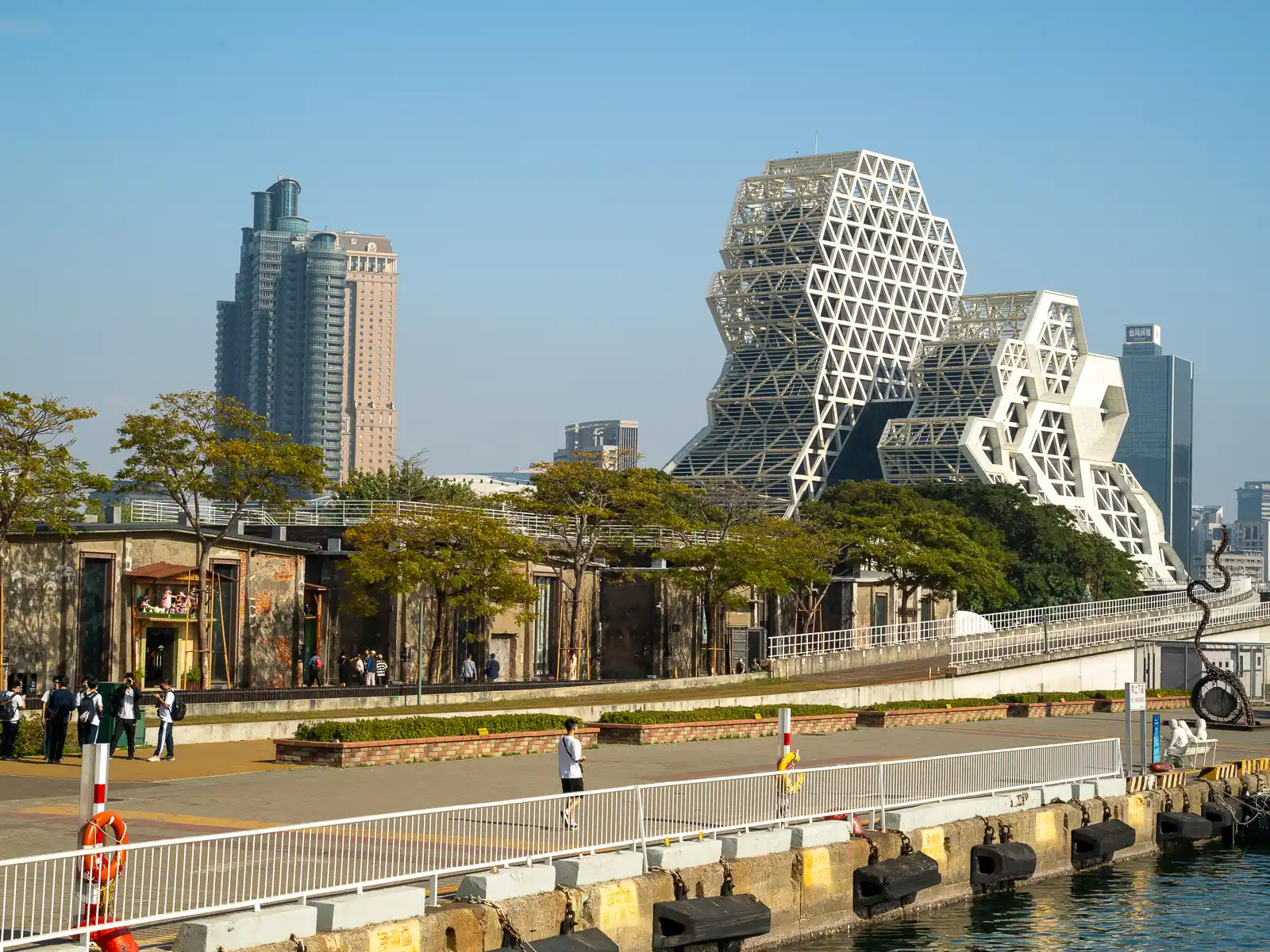
The Kaohsiung Music Center is an avant-garde performing arts complex that overlooks Kaohsiung Harbor.
Designed by Spanish architecture firm MADE IN, the Music Center adopts the design of an undulating wave to reflect Kaohsiung’s role as a harbor city. Throughout the year, the complex is home to some of the world’s most impressive laser and light shows, many of which celebrate cultural events or holidays like New Year’s.
The Kaohsiung Music Center’s maritime-themed structures cover 27 acres and include the eye-catching Wave Tower—designed to look like a flowing wave, the Coral Zone commercial area, as well as warehouses, outdoor plazas, and elevated walkways. The area, which is just a short walk away from the Dayi Warehouse Cluster of Pier 2 Art Center, is home to several restaurants and exhibition spaces as well.
Hamasen Railway Cultural Park
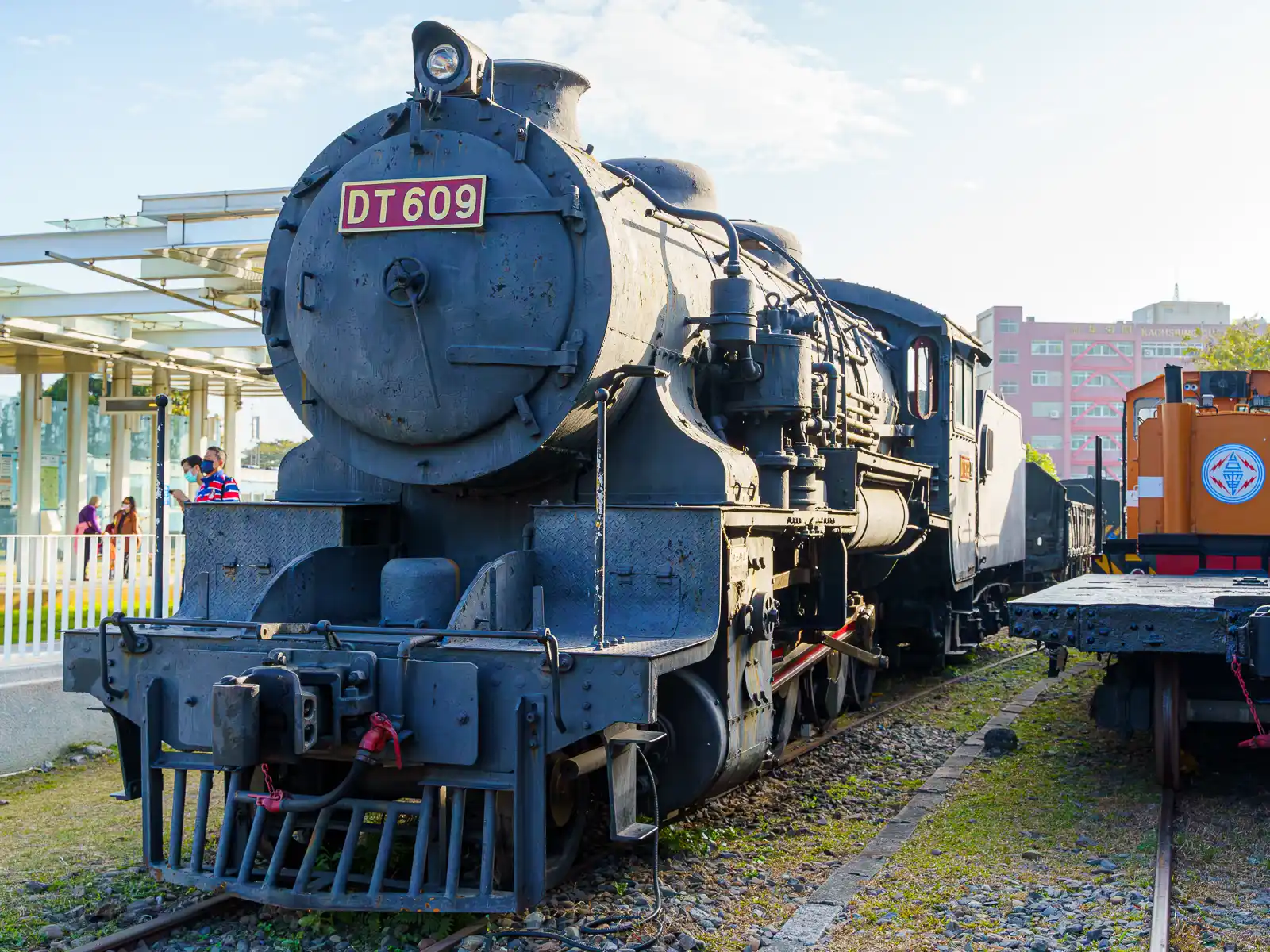
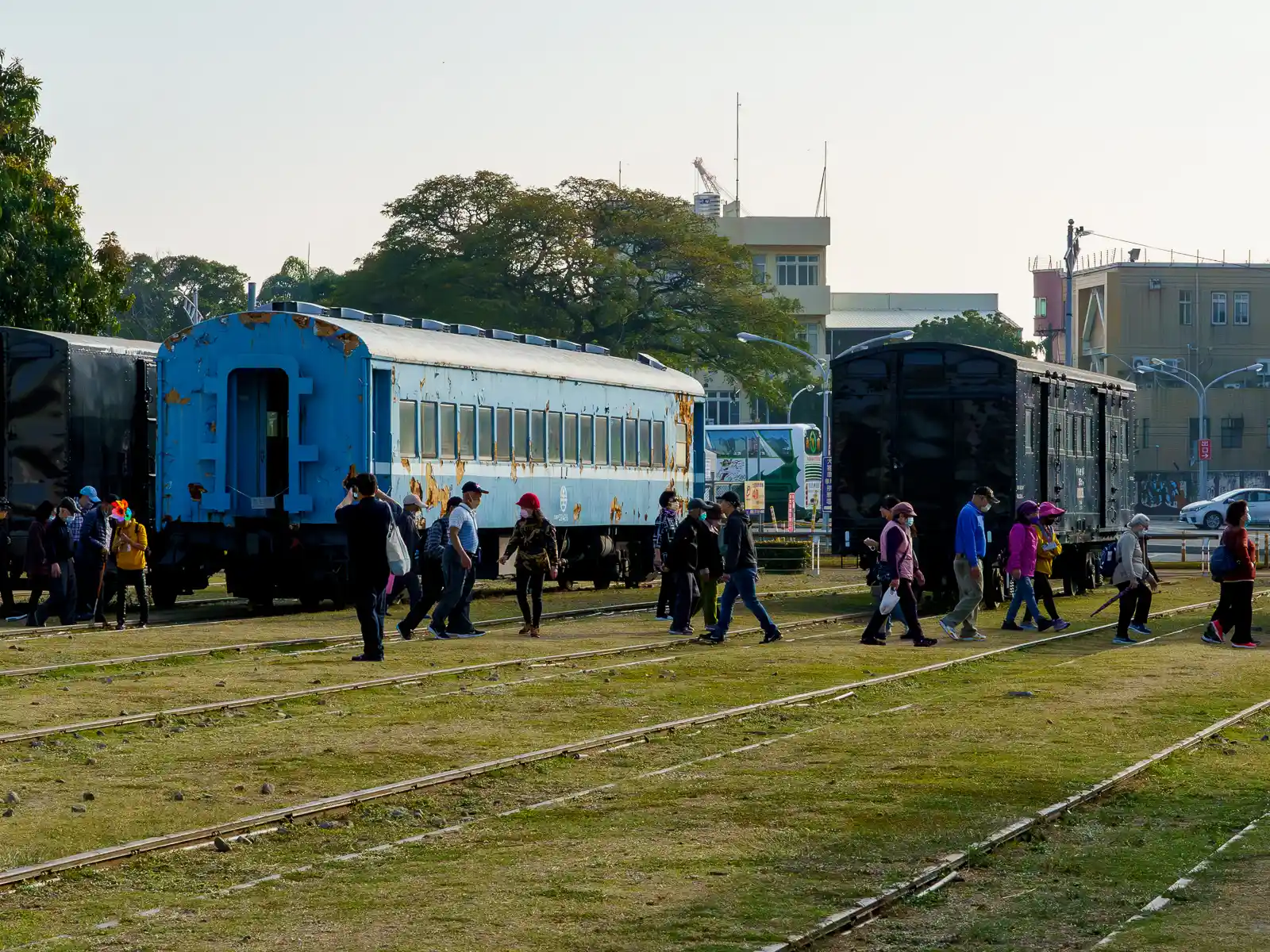
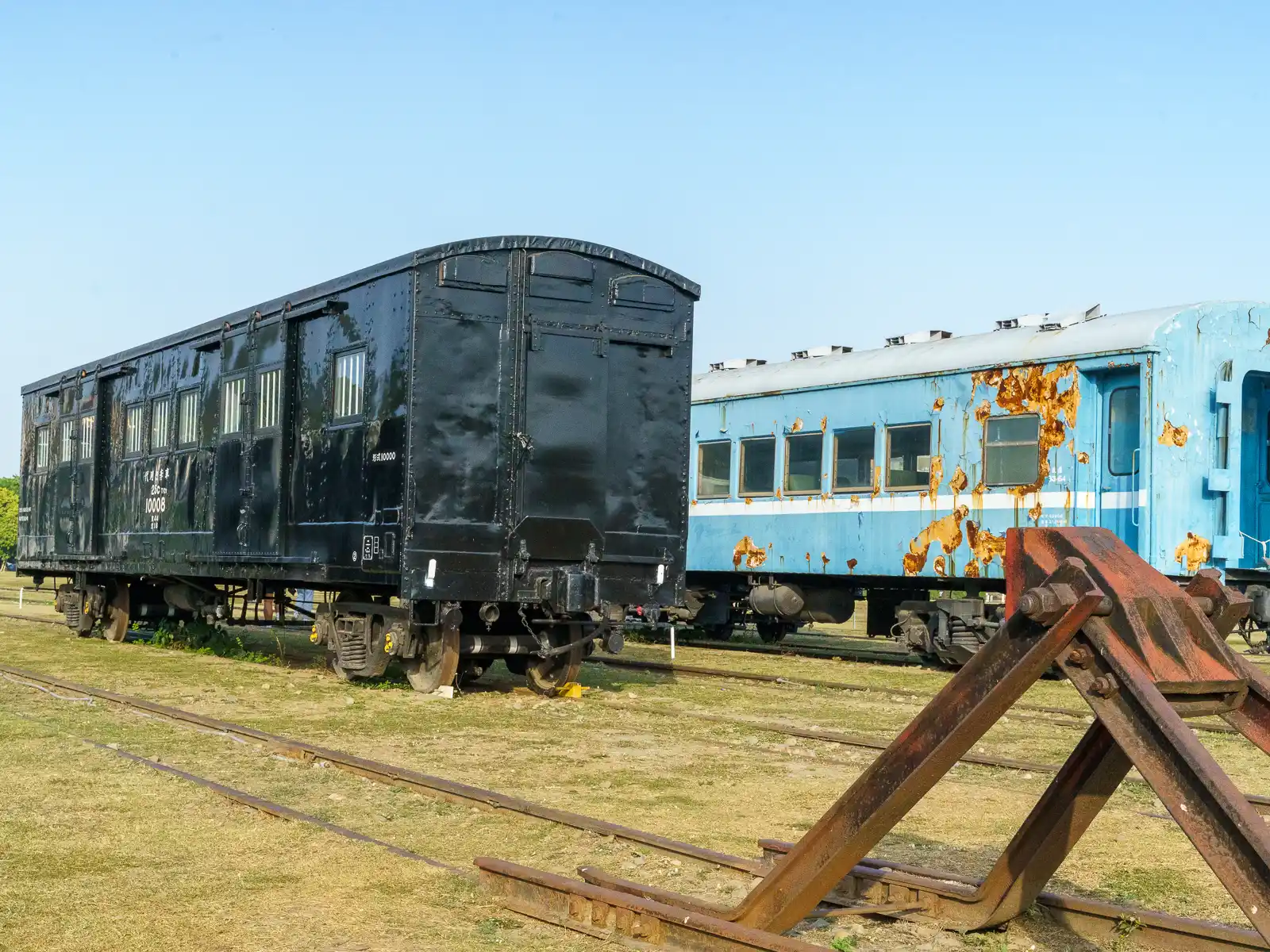
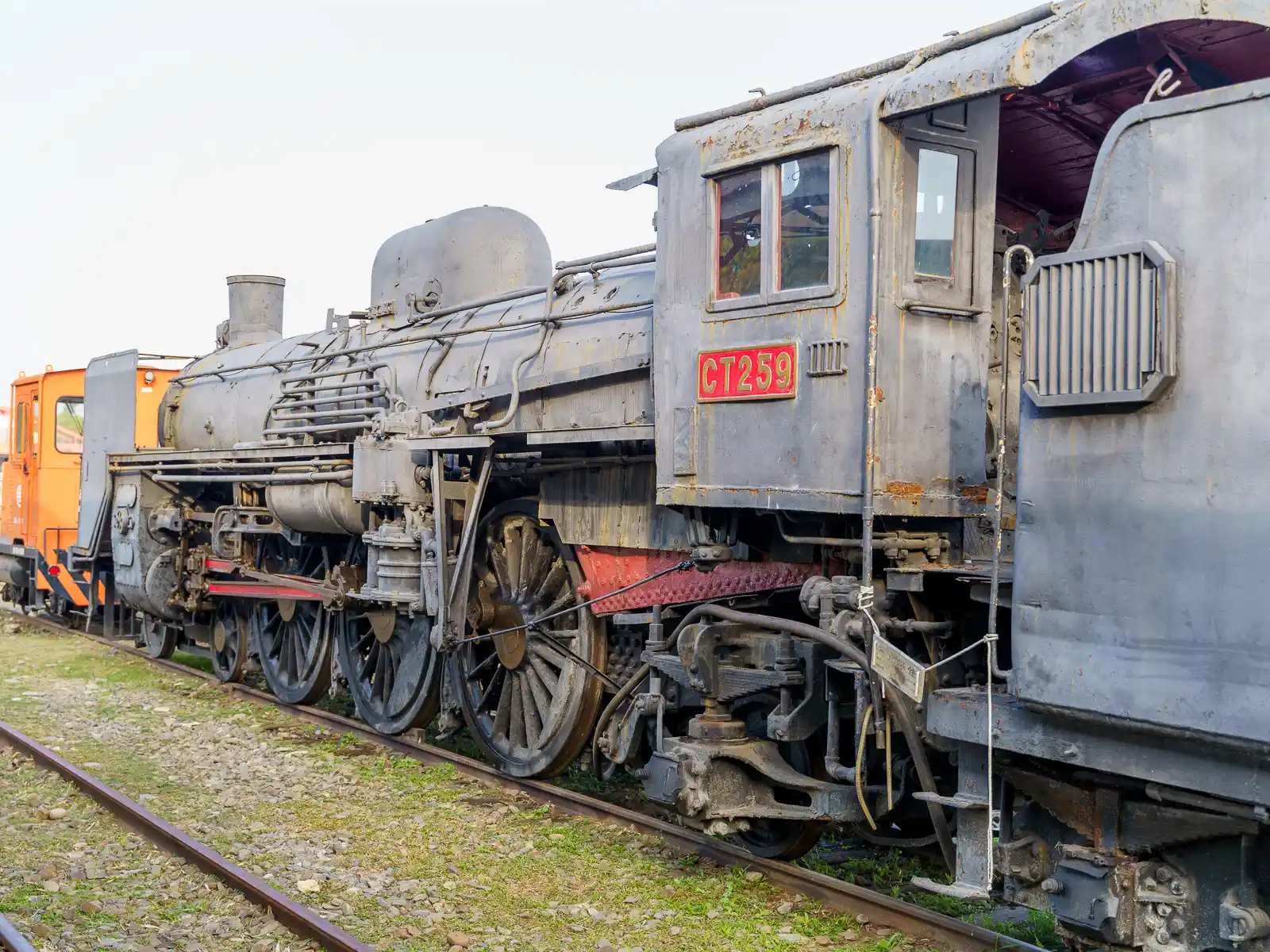
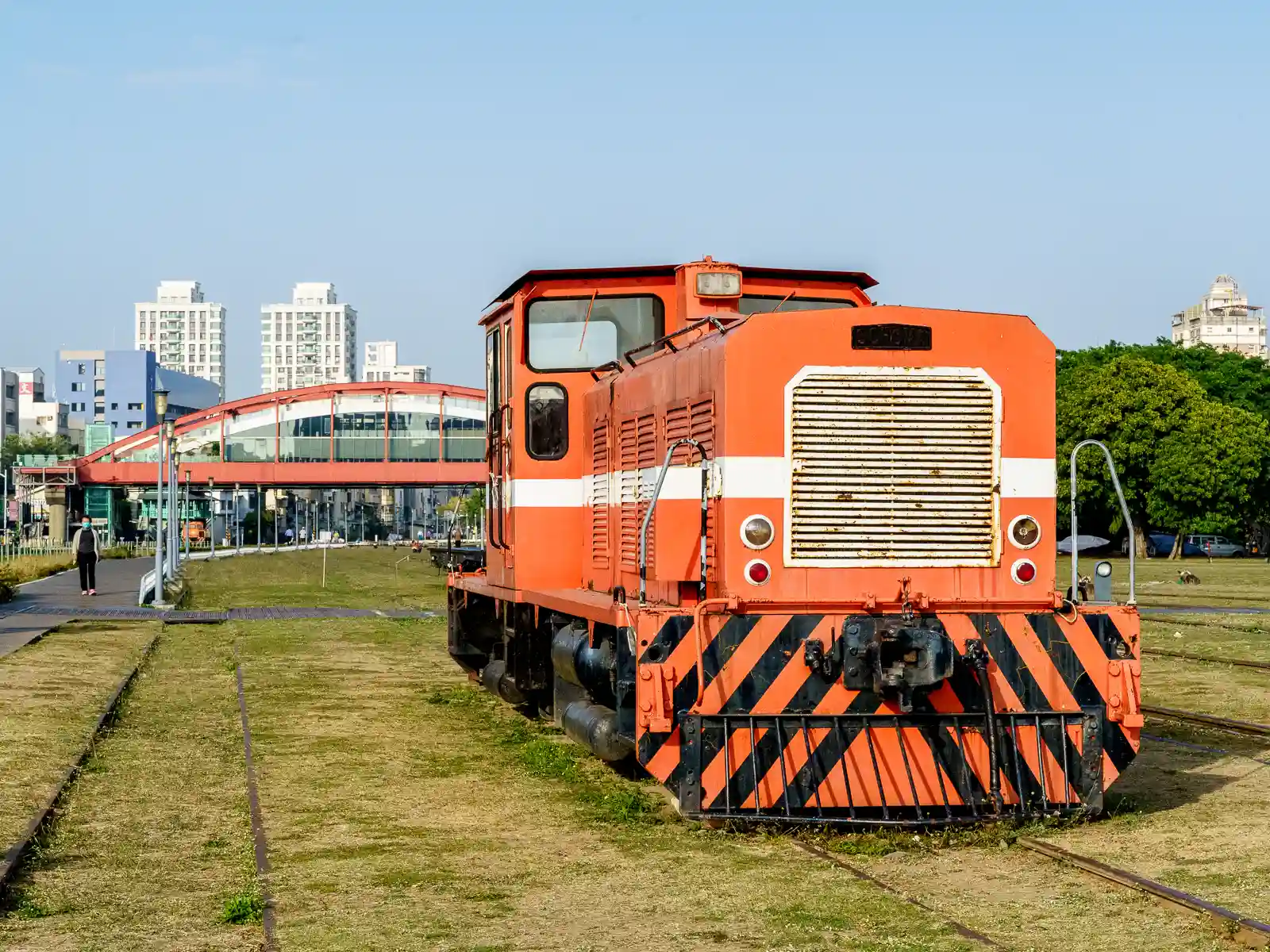
Located next to the Pier-2 Art Center, and just next to Kaohsiung Light Rail Hamasen Station is the Hamasen Railway Cultural Park.
The Hamasen Railway Cultural Park contains what was originally Dagou Station (the word “Dagou” is an older name for parts of Kaohsiung) from the Japanese colonial period, the first train station in Kaohsiung, and once the largest freight station in Taiwan. The Old Dagou Station Story House within the park was the original station building.
Outside the Old Dagou Station Story House is the old railway depot, now a vast green space, equivalent to the size of 12 soccer fields with criss-crossing railroad tracks. Within the park, there are nostalgic hundred-year-old train carriages, antique steam locomotives, sleeping cars, and steel installation artworks.
Also, check out the Takao Railway Museum and the Hamasen Museum of Taiwan Railway in the Penglai Area of the Pier 2 Art Center to see a variety of model railways
Hamasen 1921
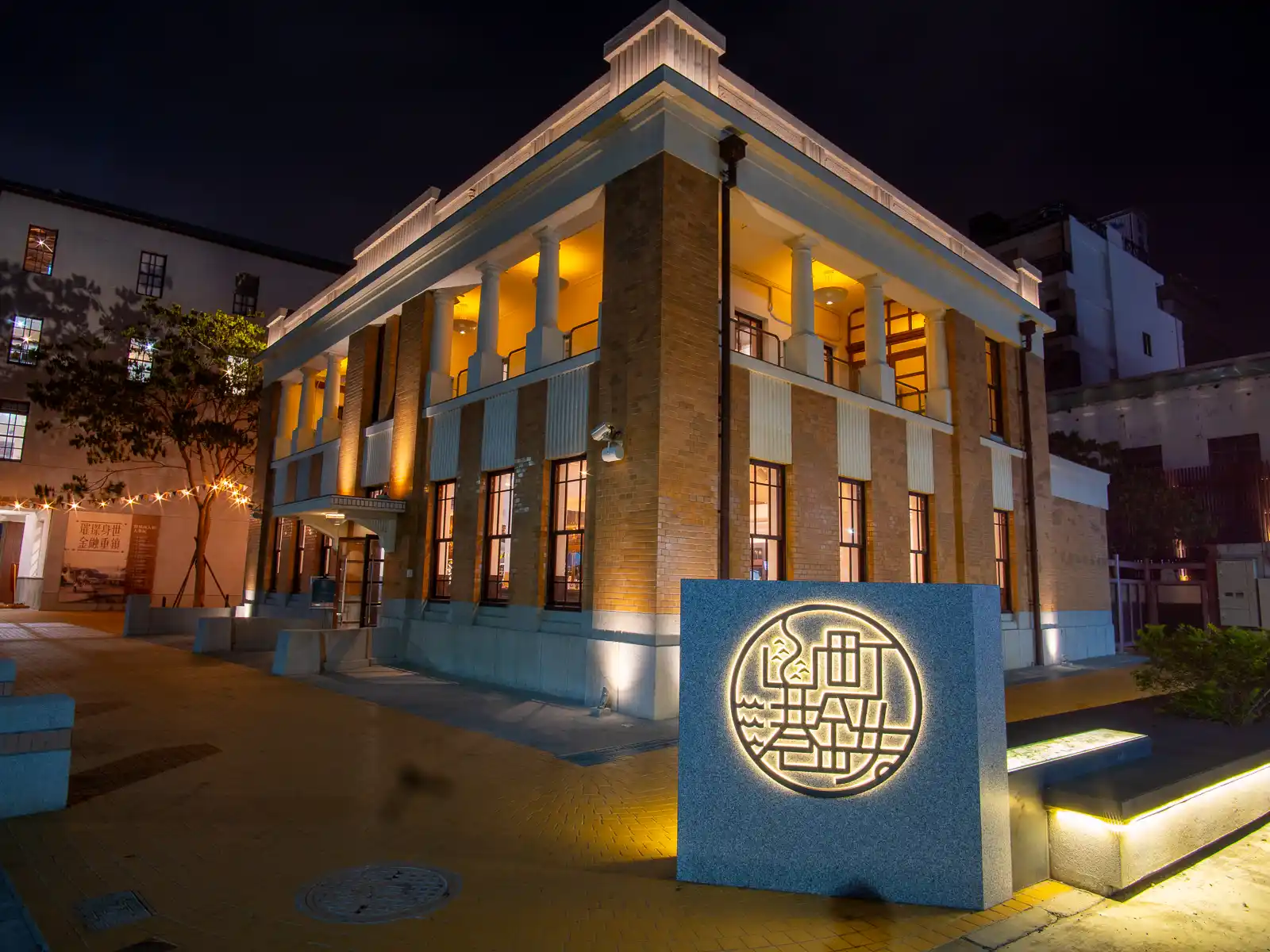
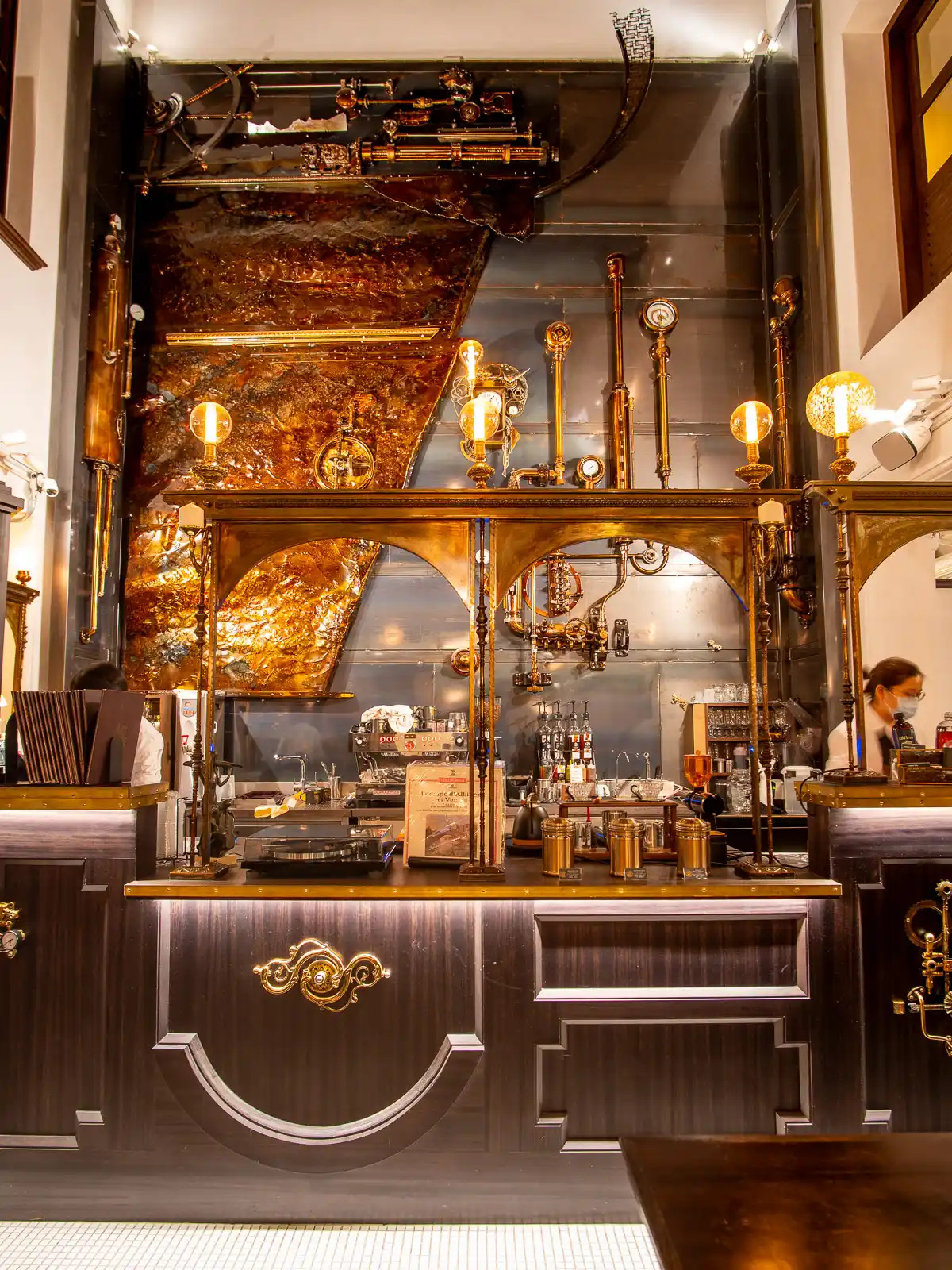
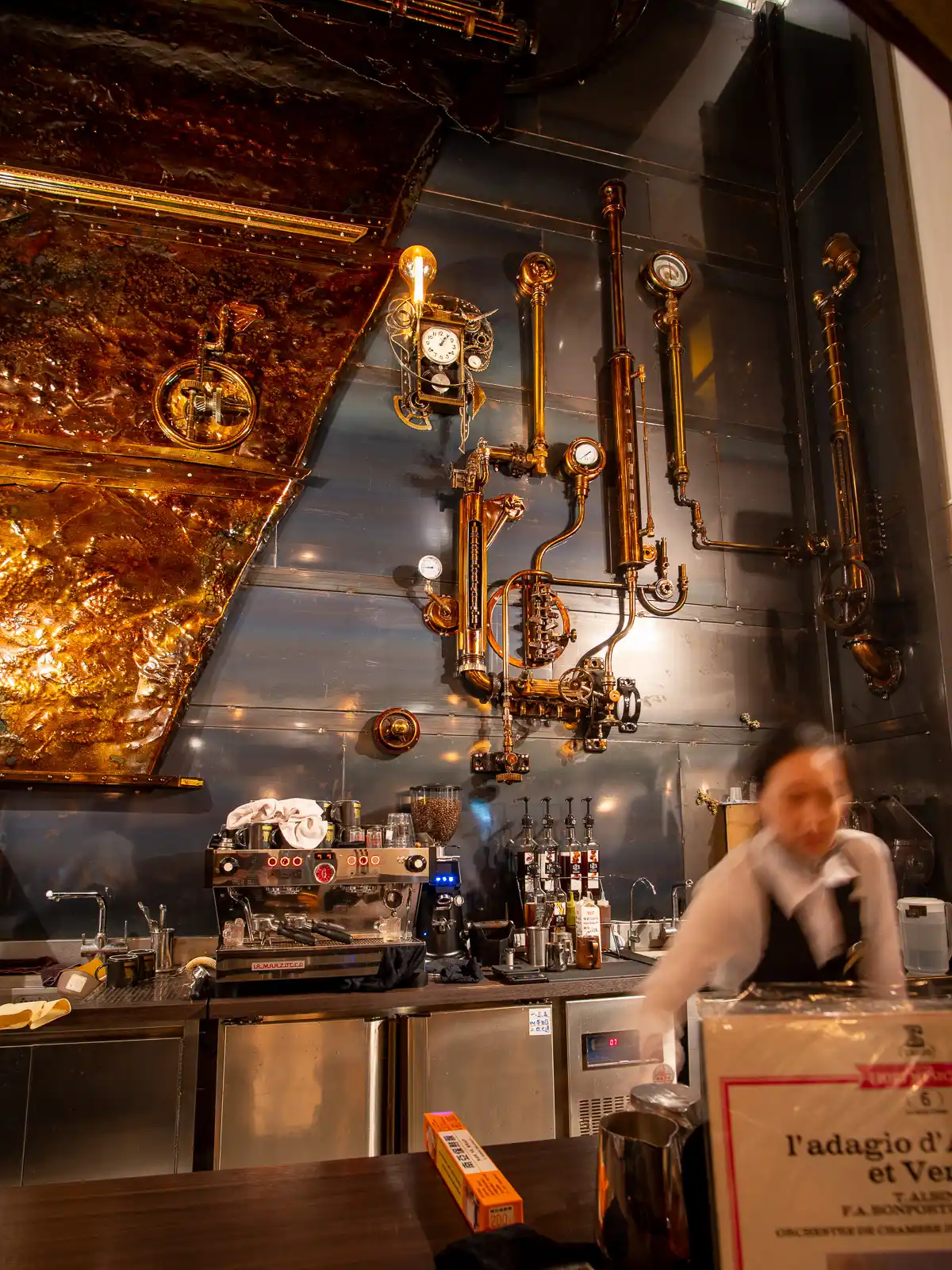
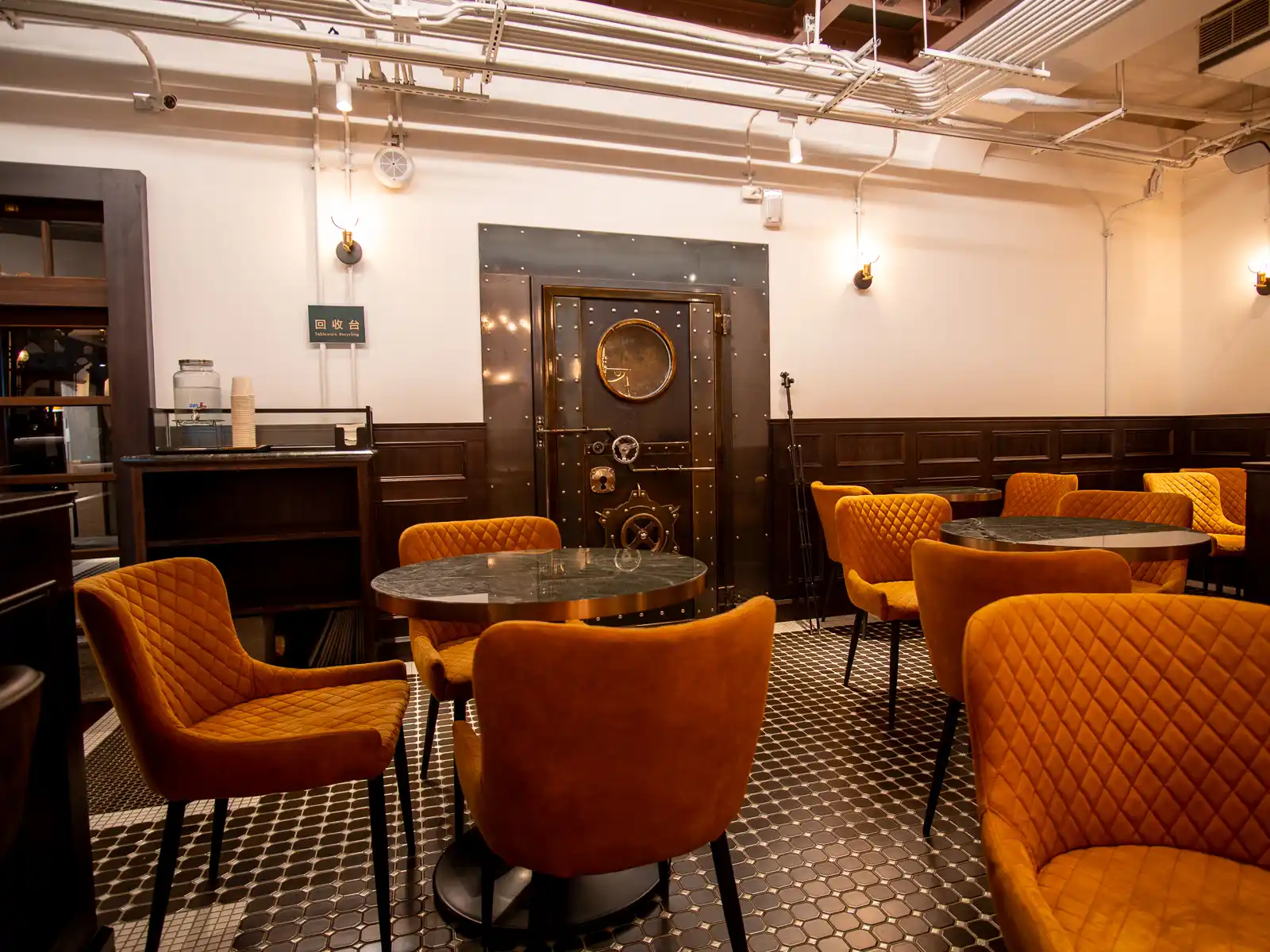
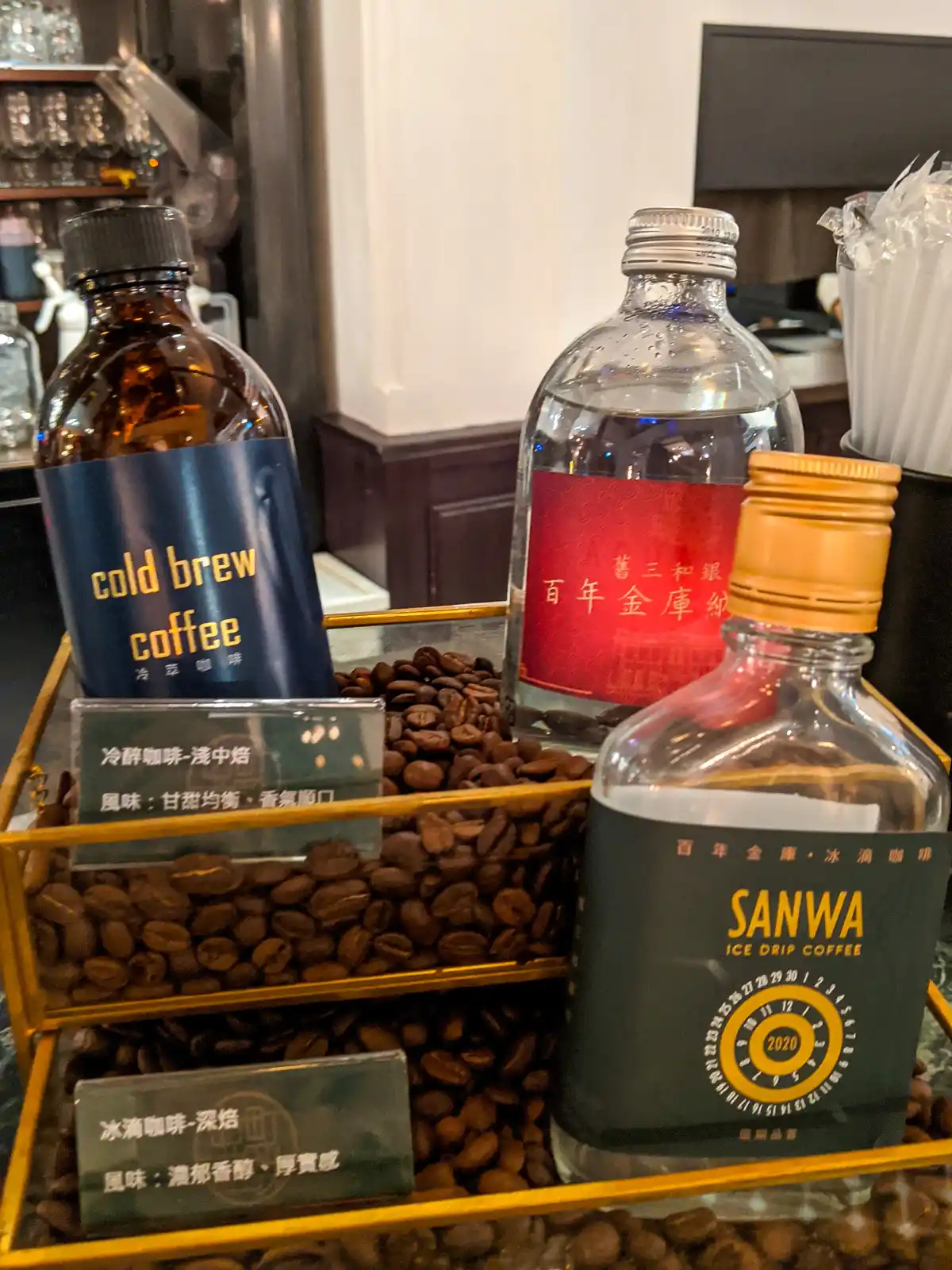
The Hamasen 1921 Coffee Shop is an opportunity to travel back in time to the era when Hamasen (the neighborhood where the Hamasen Railway Cultural Park and Pier 2 are located) was the most prosperous area in Kaohsiung. The coffee shop is situated in a repurposed historic building from 1921 that was originally Sanwa Bank’s Kaohsiung branch.
The heritage exterior of the building is well-preserved. Needless to say, its formal baroque red-brick exterior is much more reminiscent of a financial institution rather than a trendy cafe, but inside, a retro paradise awaits. Four old bank counters are preserved as a partition at the counter, while also acting like a photo frame to display the dining area on the other side. The cold drip coffee machine is hidden in the old bank vault, and decorative typewriters and record players add additional vintage vibes.
Kaohsiung Grandma’s Ice Shaved Ice
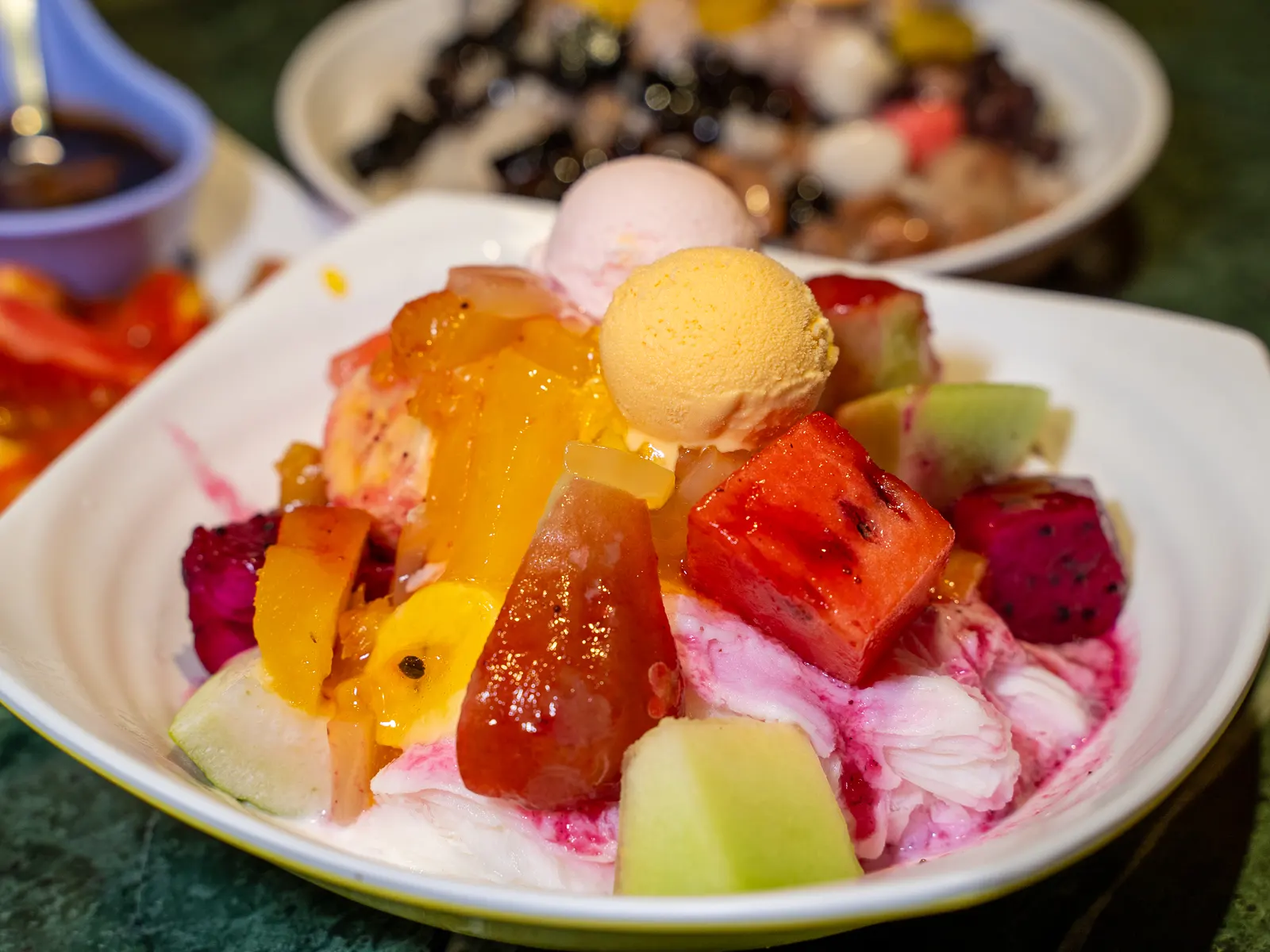
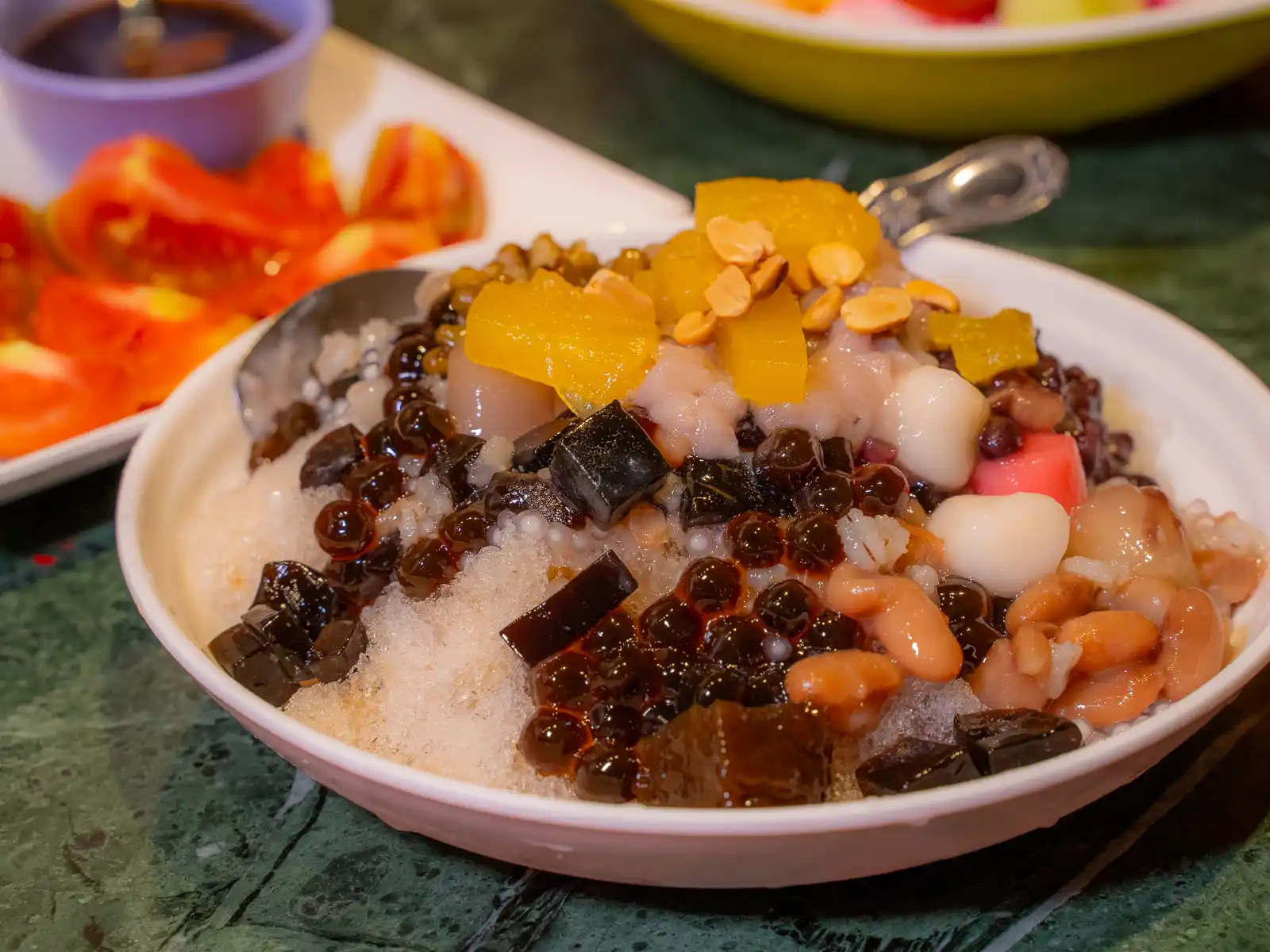
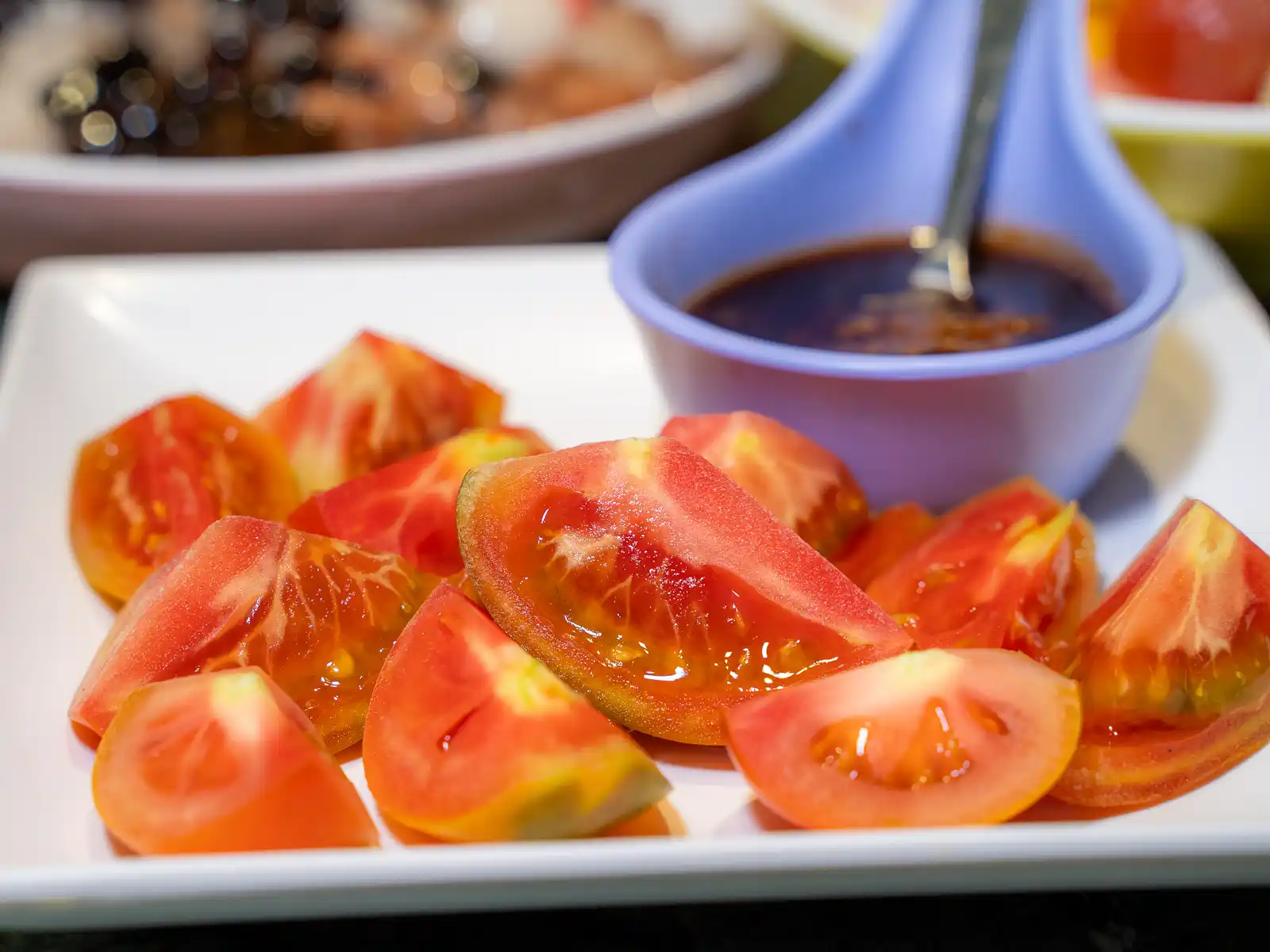
Kaohsiung Grandma’s Ice is an emblem of tradition and taste in the heart of Kaohsiung. One of many shaved ice shops in the Yancheng District, it distinguishes itself through its rich history dating back to the Japanese colonial era. Today, the shop is famous for its signature ice, which boasts a mesmerizing purple hue derived from natural dragon fruit.
With an expansive storefront, the shop’s generous seating area is a testament to its popularity among both tourists and locals. Moreover, for a bowl priced at 2 USD, you can taste ingredients like watermelon, cantaloupe, wax apple, green mango, etc. It’s truly worth the price and full of sincerity
Formosa Boulevard Station
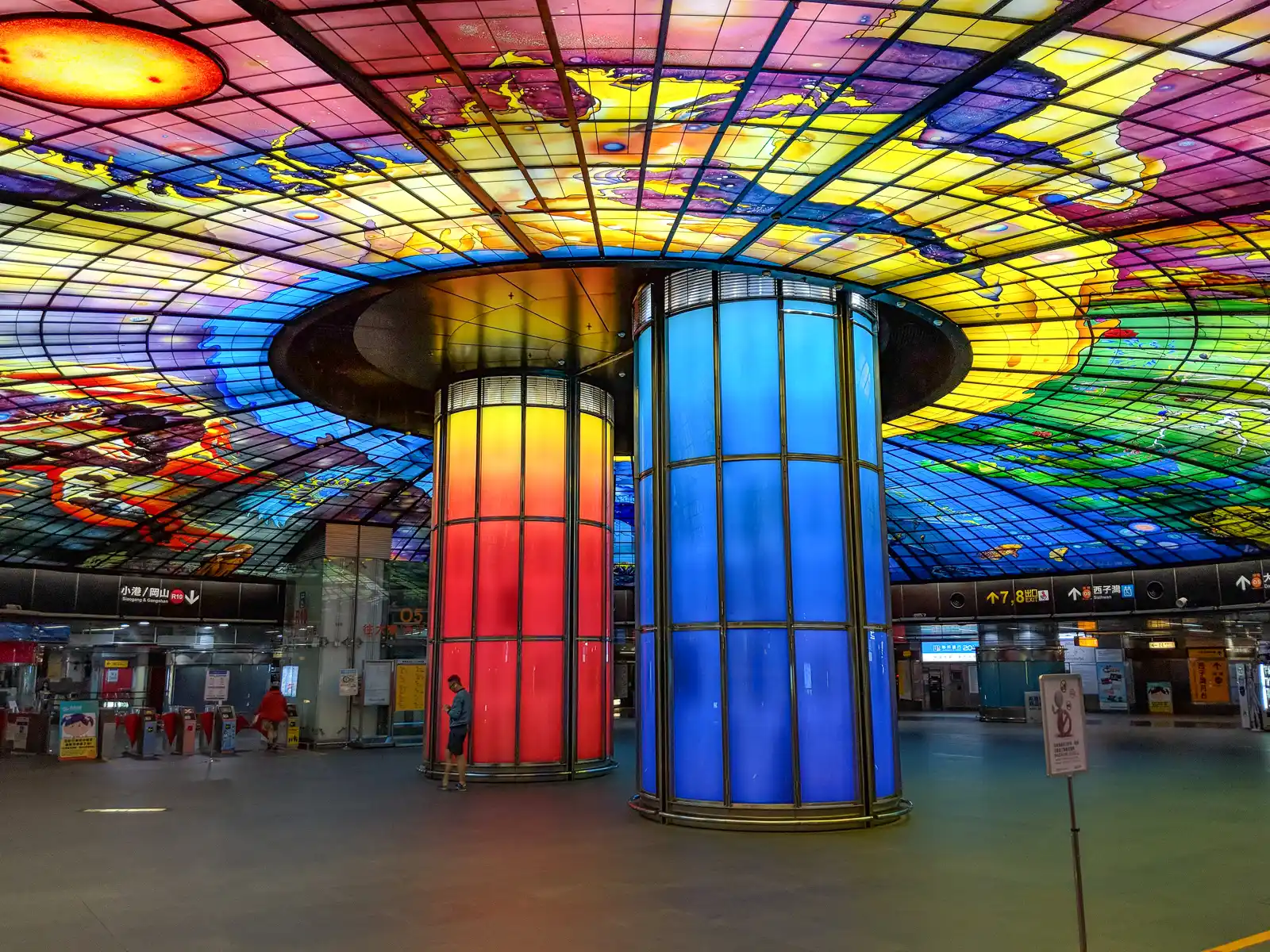
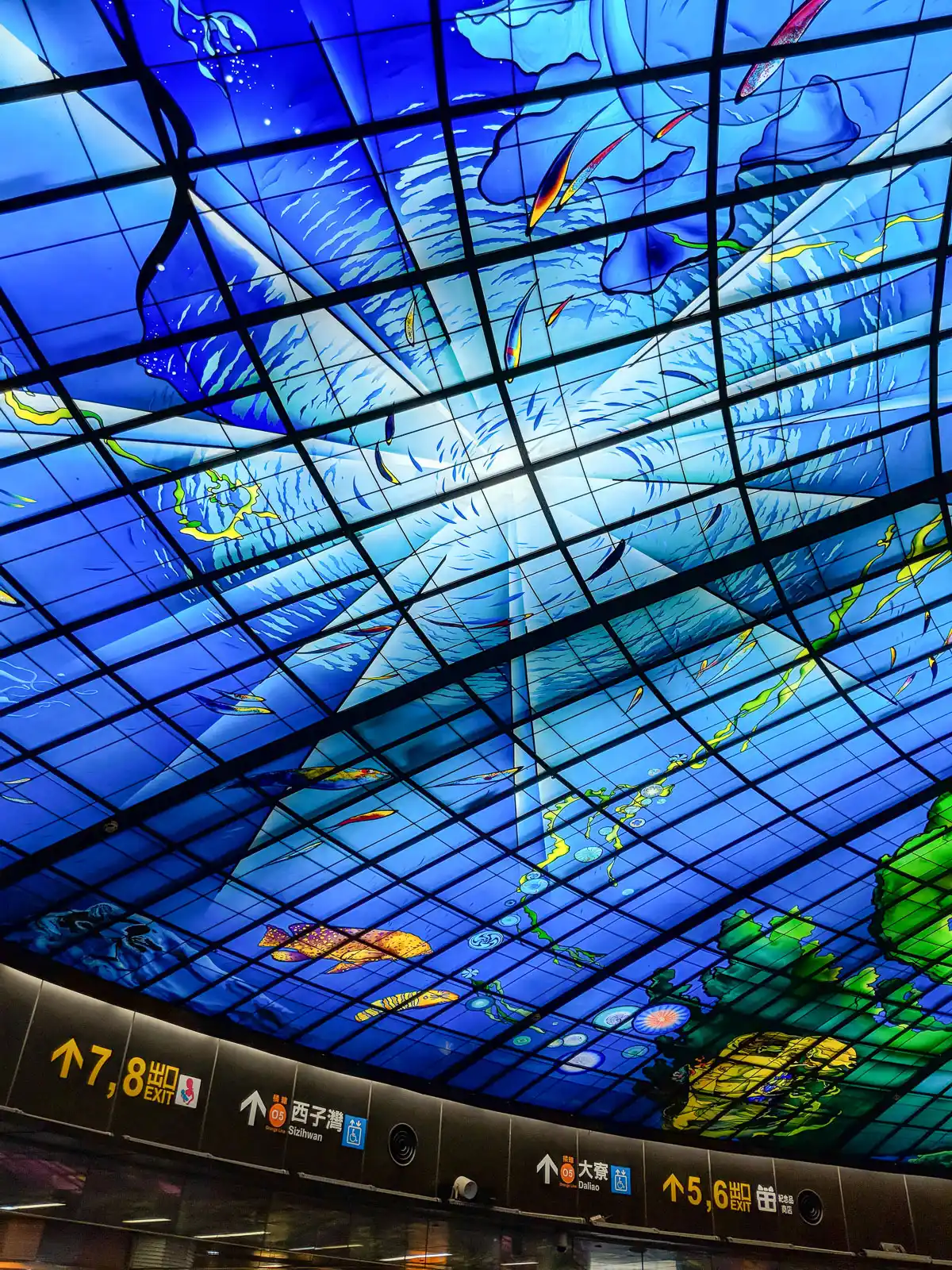
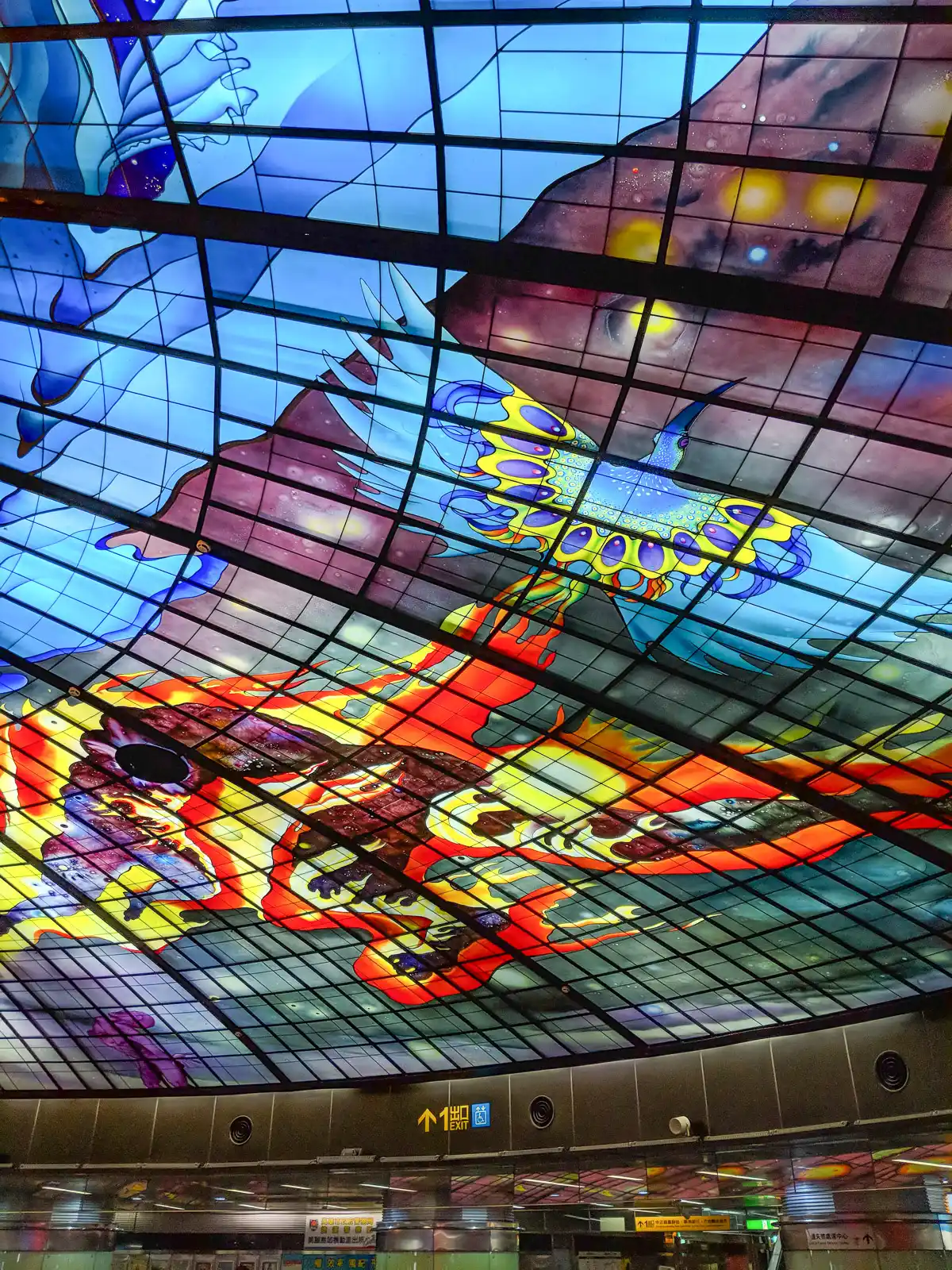
Formosa Boulevard Station is not only one of the busiest stations in Kaohsiung’s MRT system, it is also renowned for its architectural and artistic significance.
The station’s crowning glory is the “Dome of Light,” designed by Italian artist Narcissus Quagliata. Acknowledged as the world’s largest glass artwork, this magnificent dome spans 30 meters in diameter and covers an area of 2,180 square meters.
Comprising 4,500 glass panels, the artwork narrates the story of human life, transitioning through themes of water, earth, light, and fire, symbolizing the cycle of life and rebirth. Central to its narrative is a message of love and tolerance, making it not just an artistic marvel but also a beacon of hope and unity.
Weiwu Mimi Street Art Village
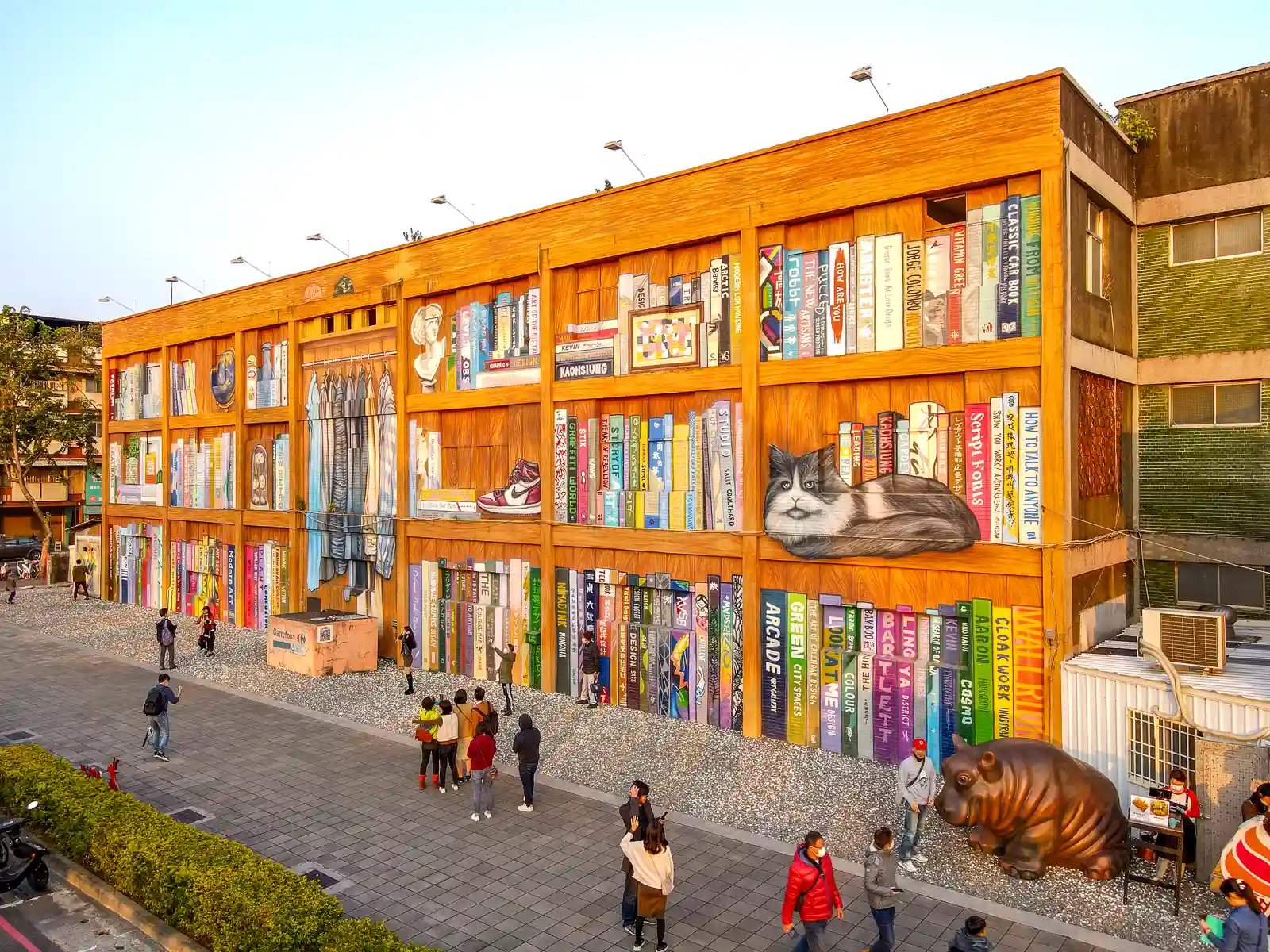
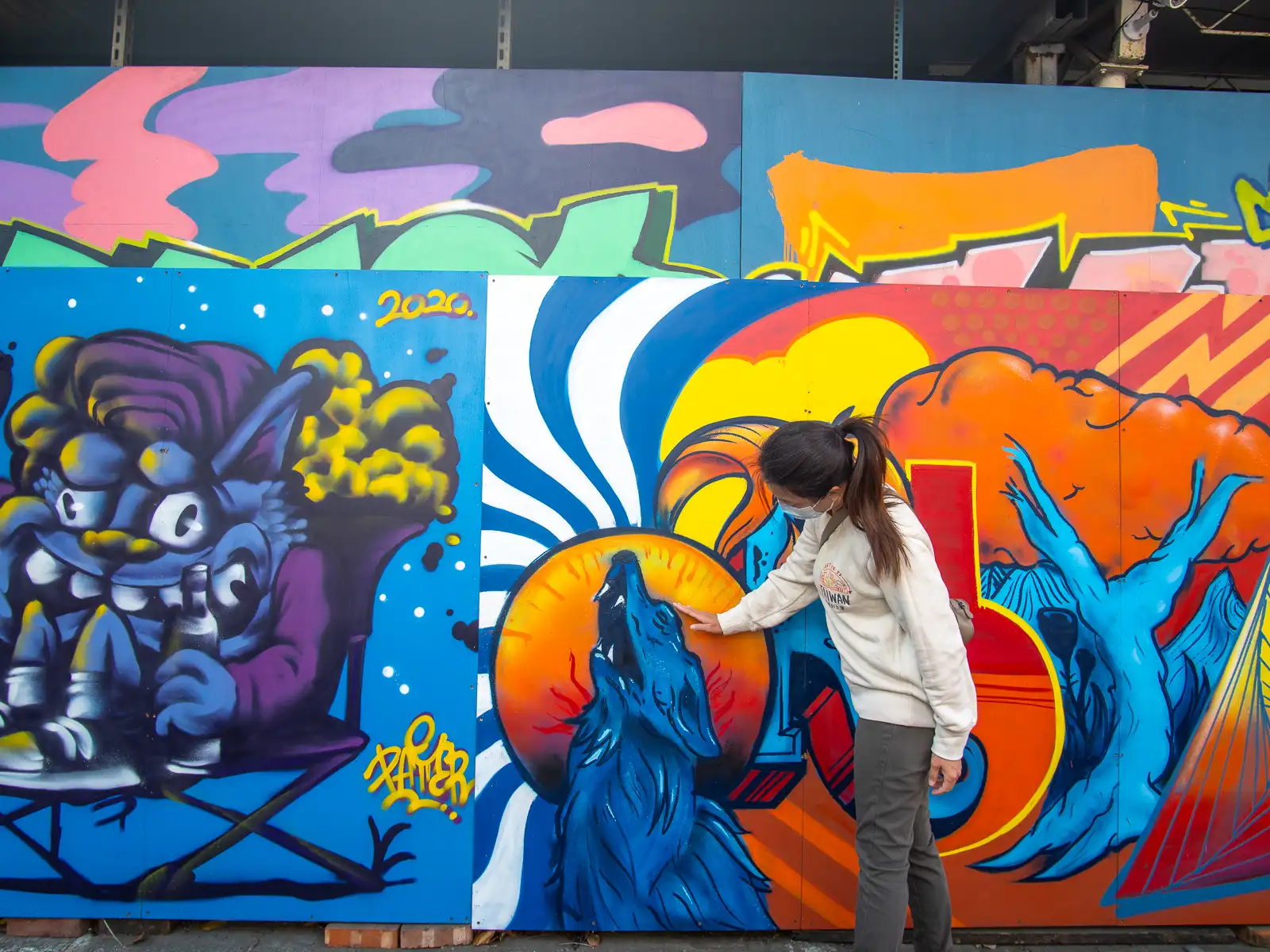
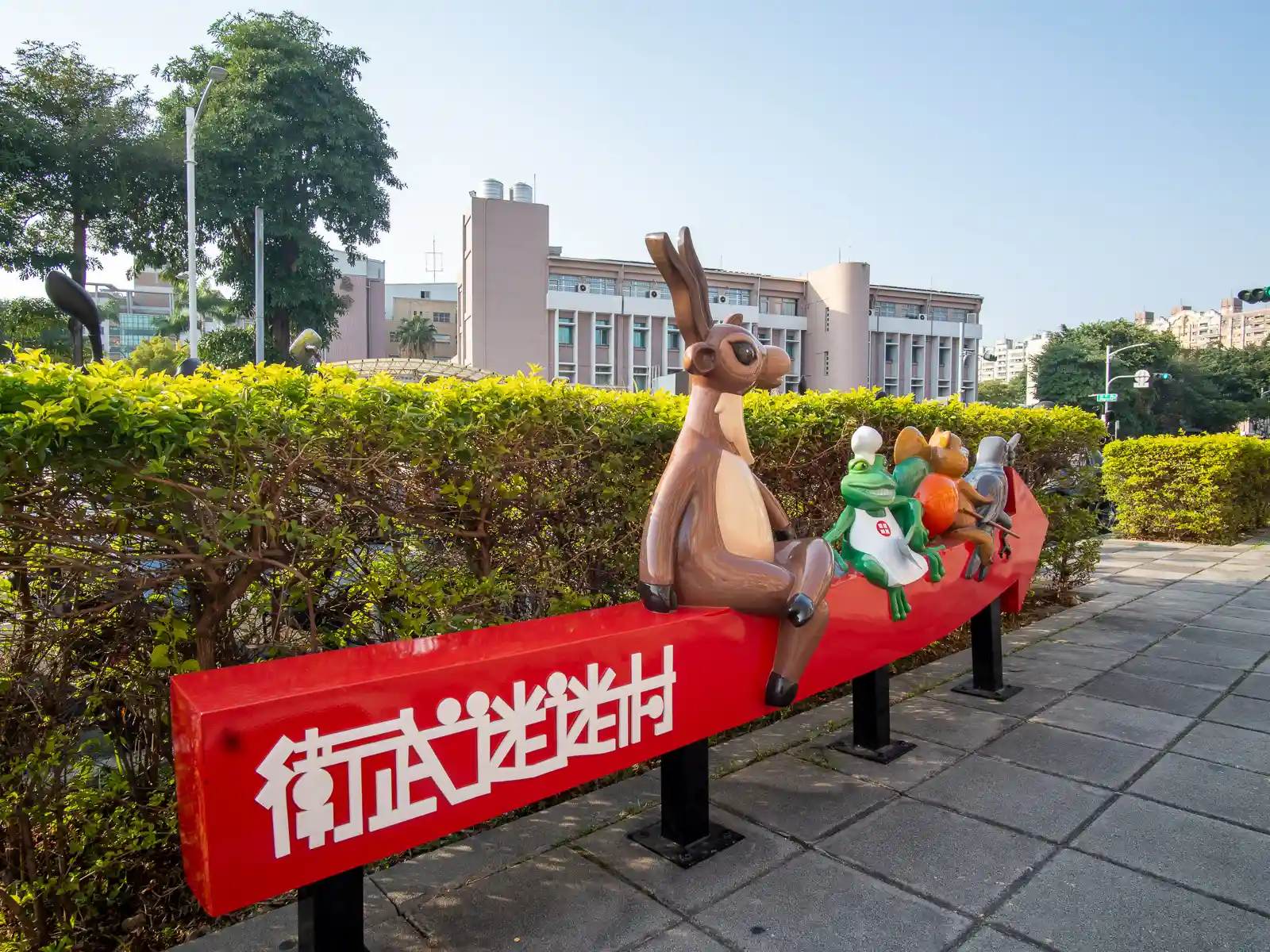
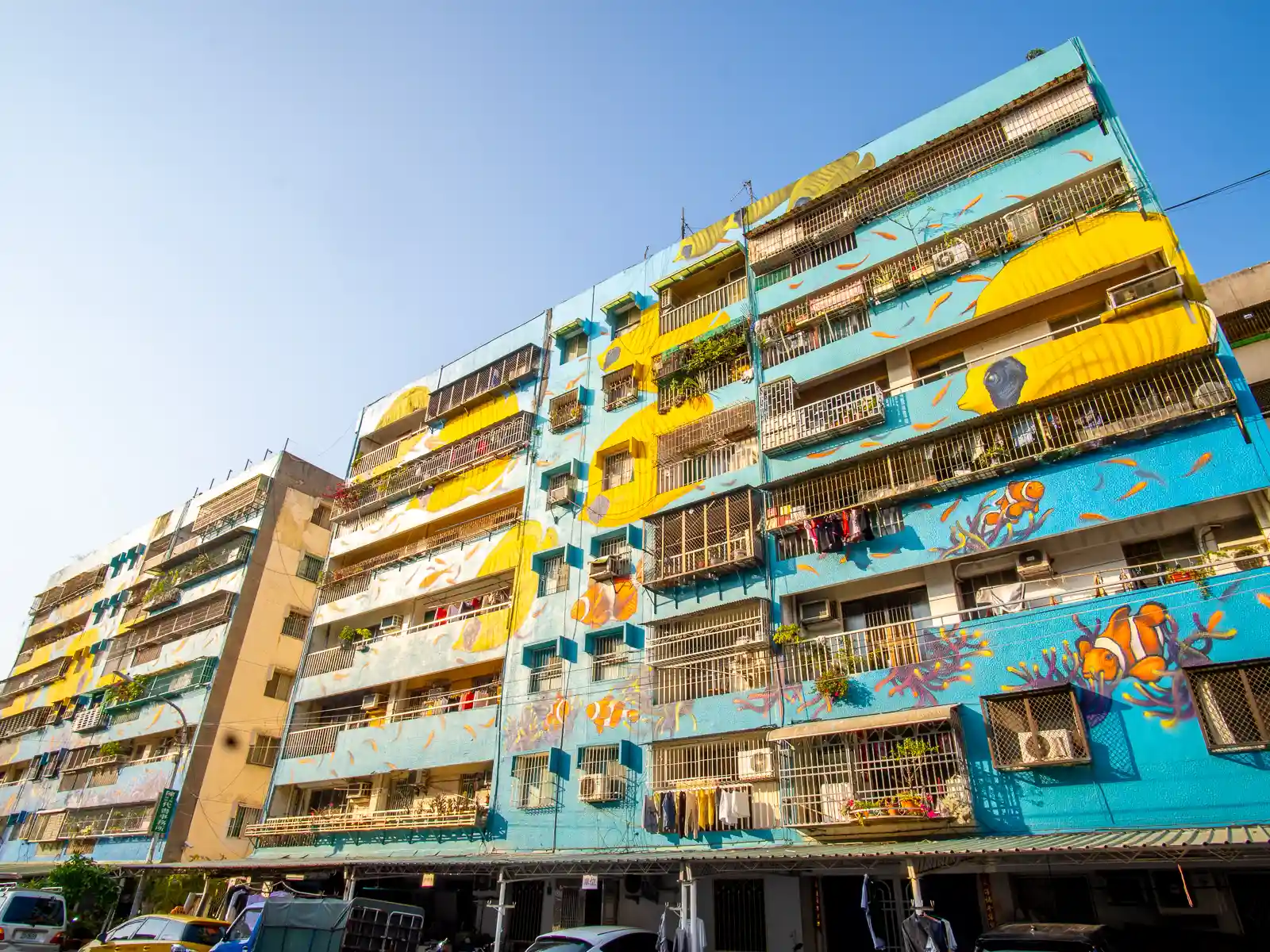
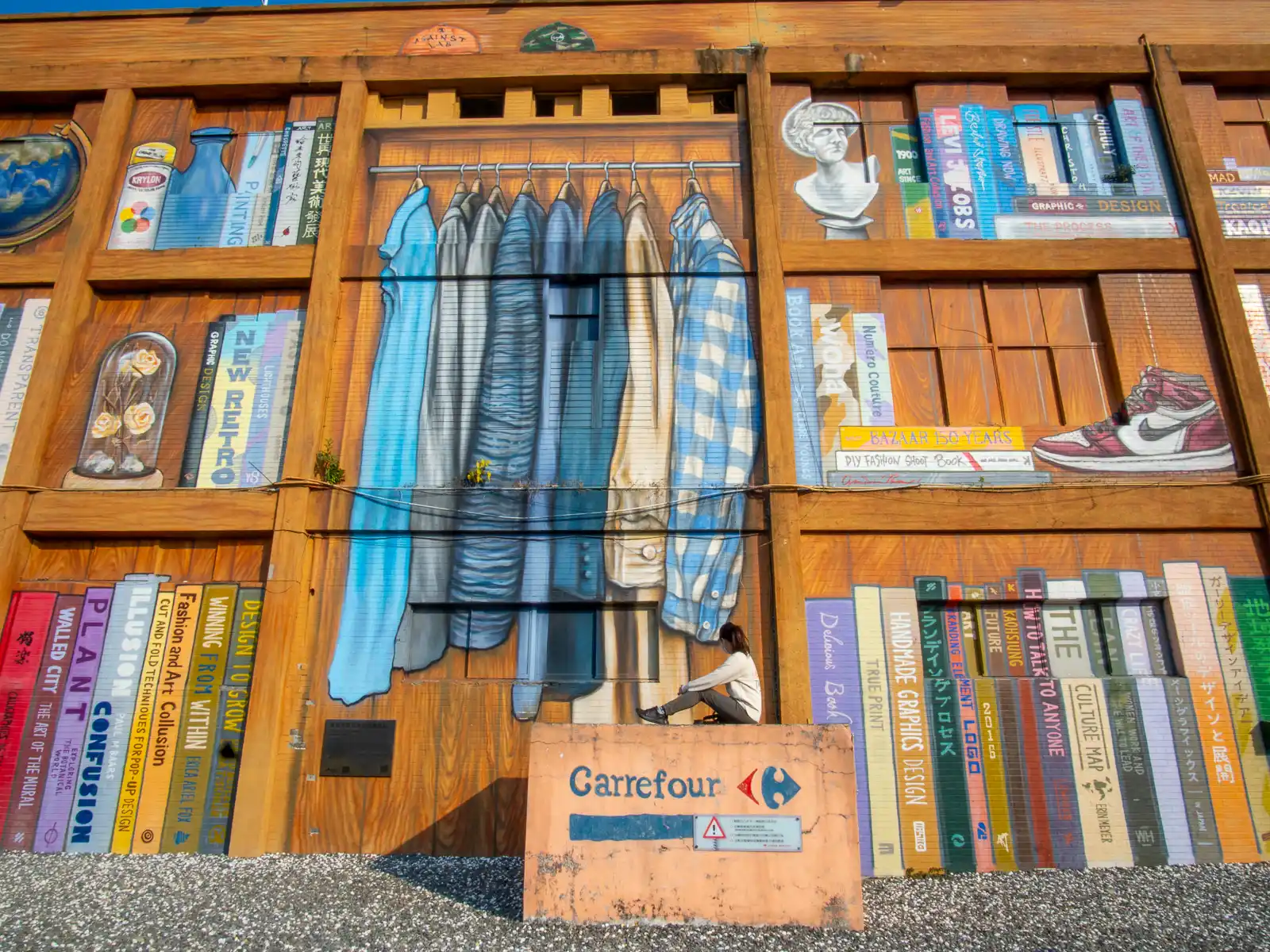
Weiwu Mimi Street Art Village offers a unique blend of art, culture, and community spirit. The annual Kaohsiung Street Art Festival, which initially aimed to revitalize the neighborhood, has now transformed the district into a global canvas, showcasing murals from 50 artists across 24 countries, rivaling renowned street art hubs like New York and Melbourne.
Beyond the neighborhood’s visual allure, the welcoming nature of the local residents enhances the experience. Proud of their transformed neighborhood, they often play the role of impromptu tour guides, sharing insights about the artworks and the history of the village. This combination of world-class art and local warmth offers tourists an authentic and immersive experience of Taiwan’s urban culture.
National Kaohsiung Center for the Arts
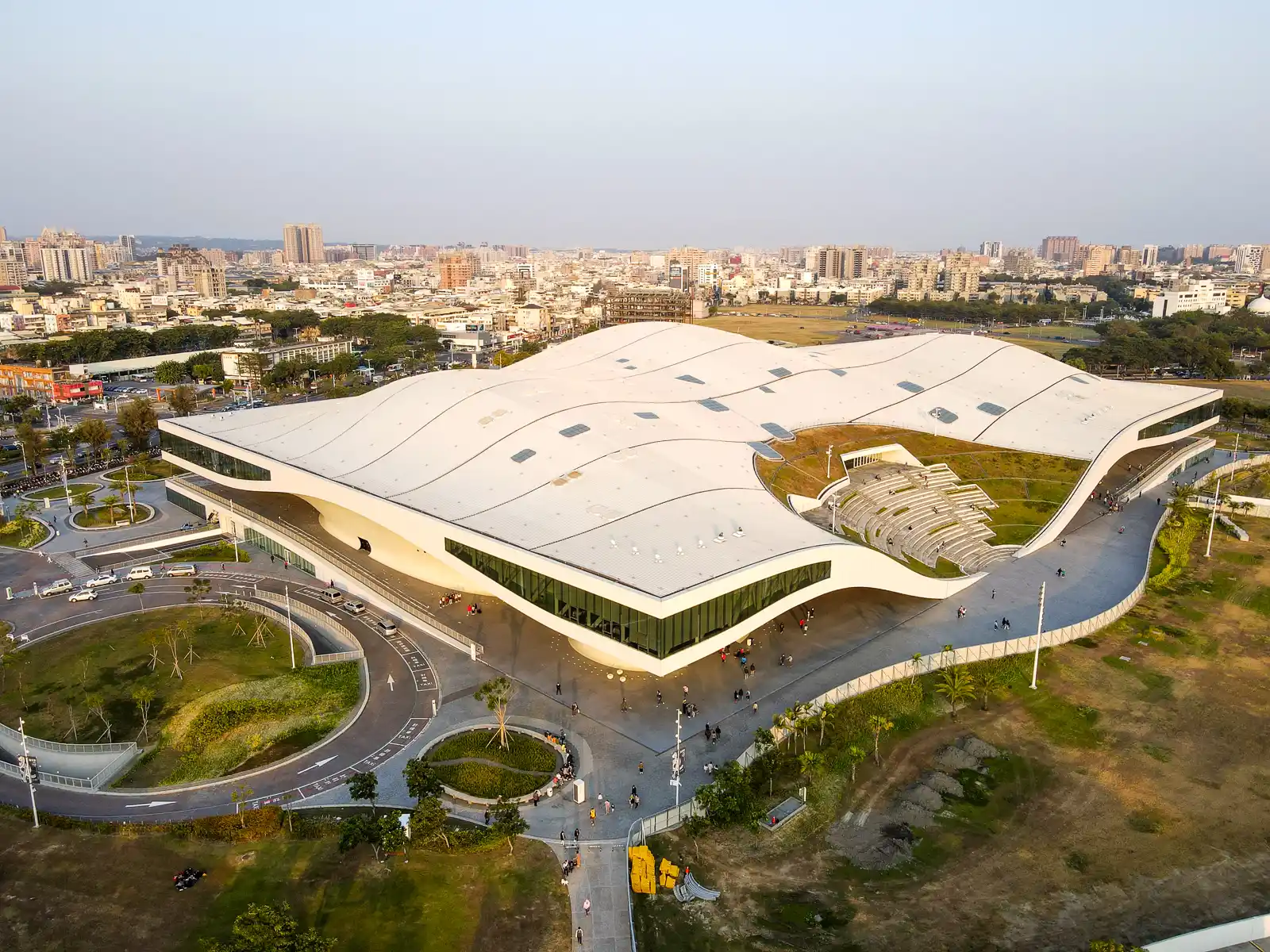
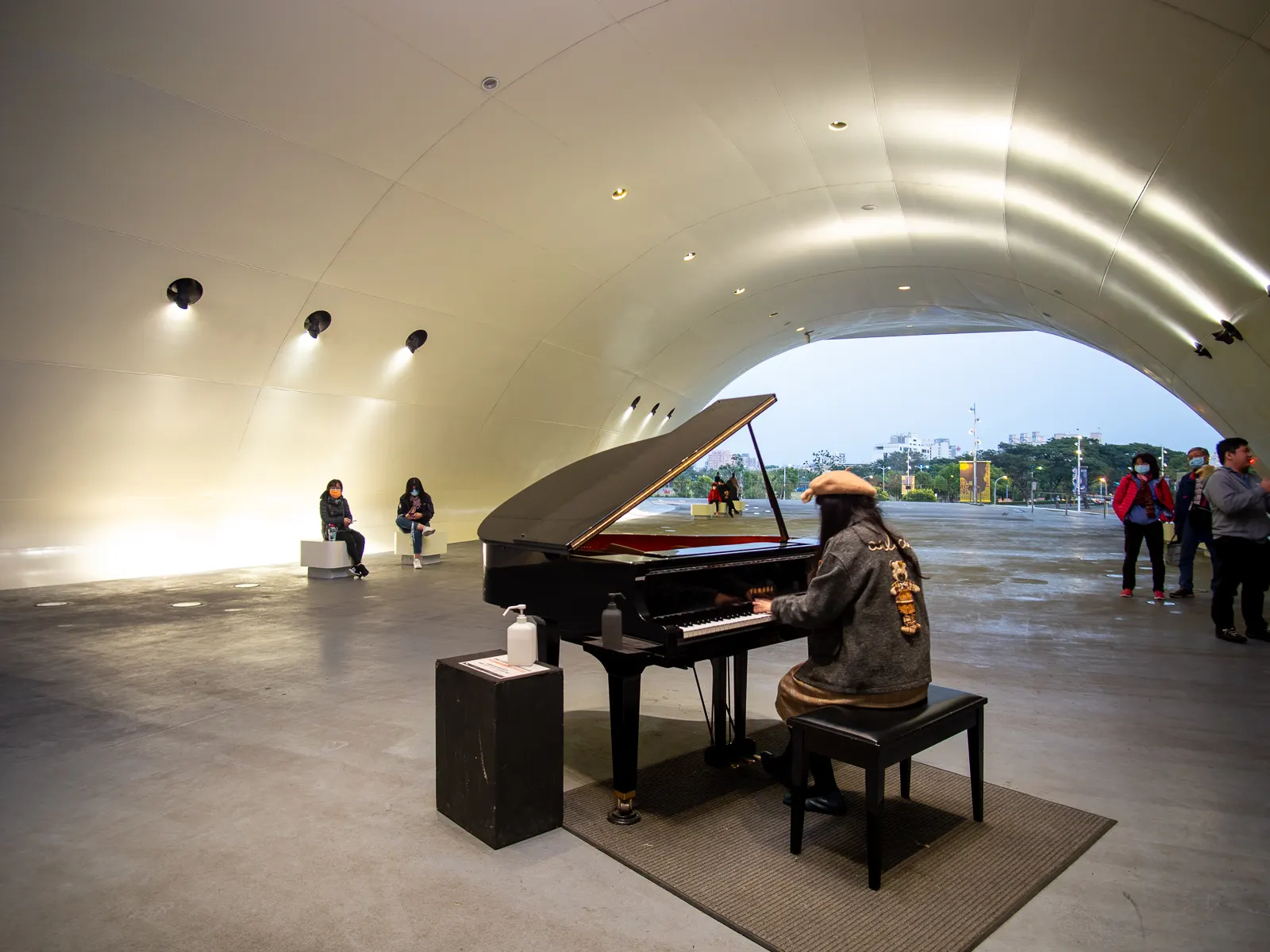
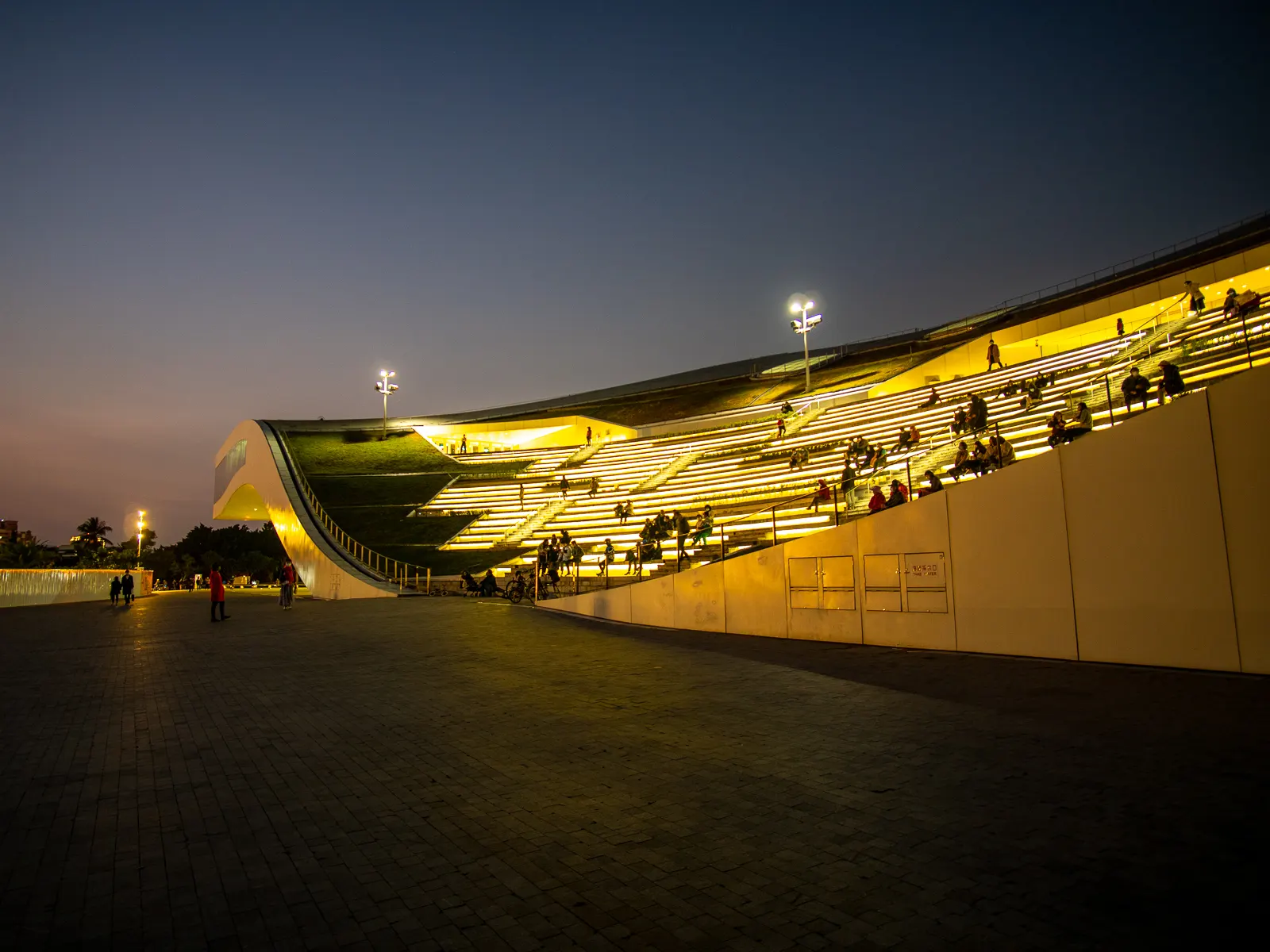
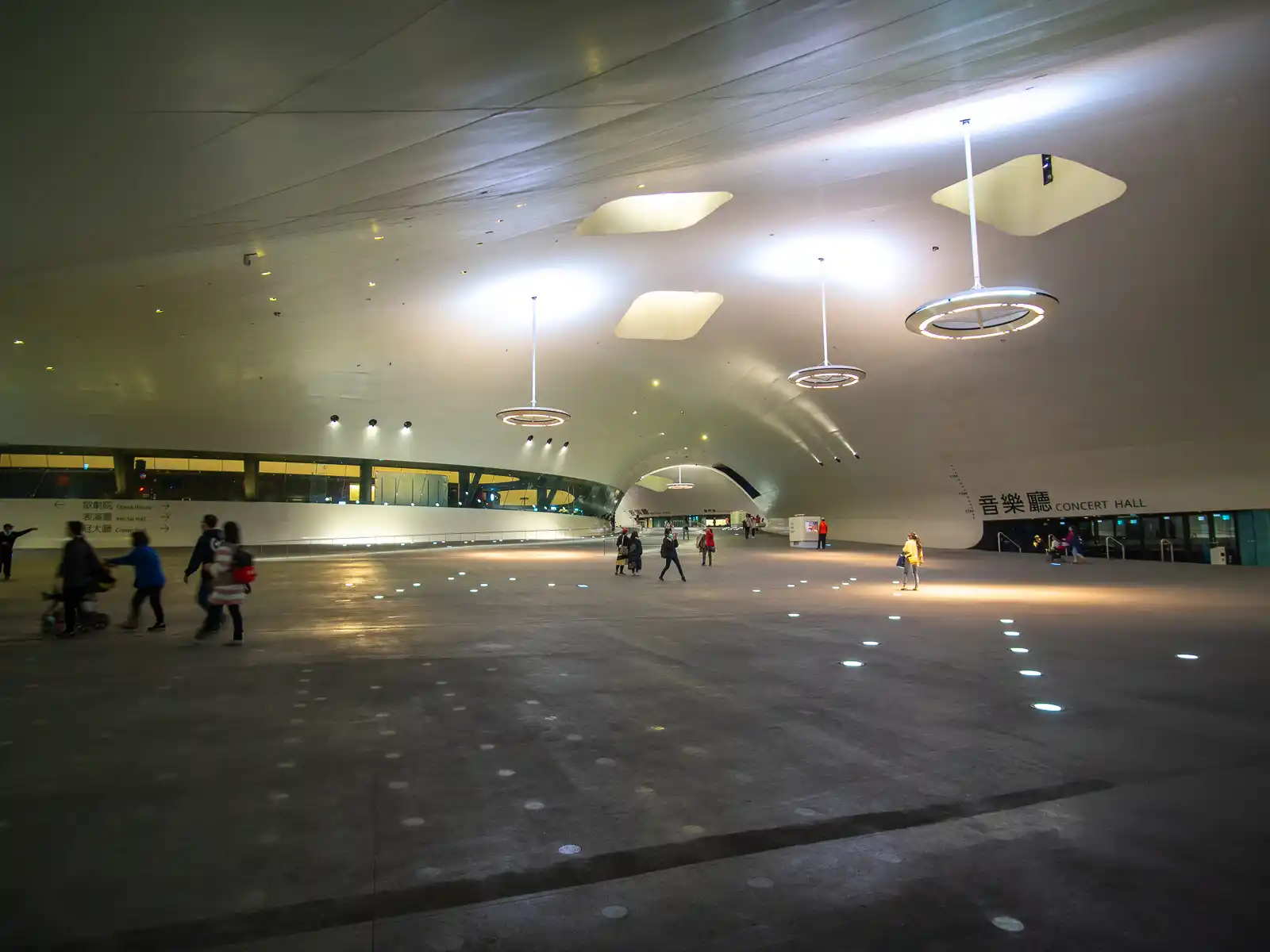
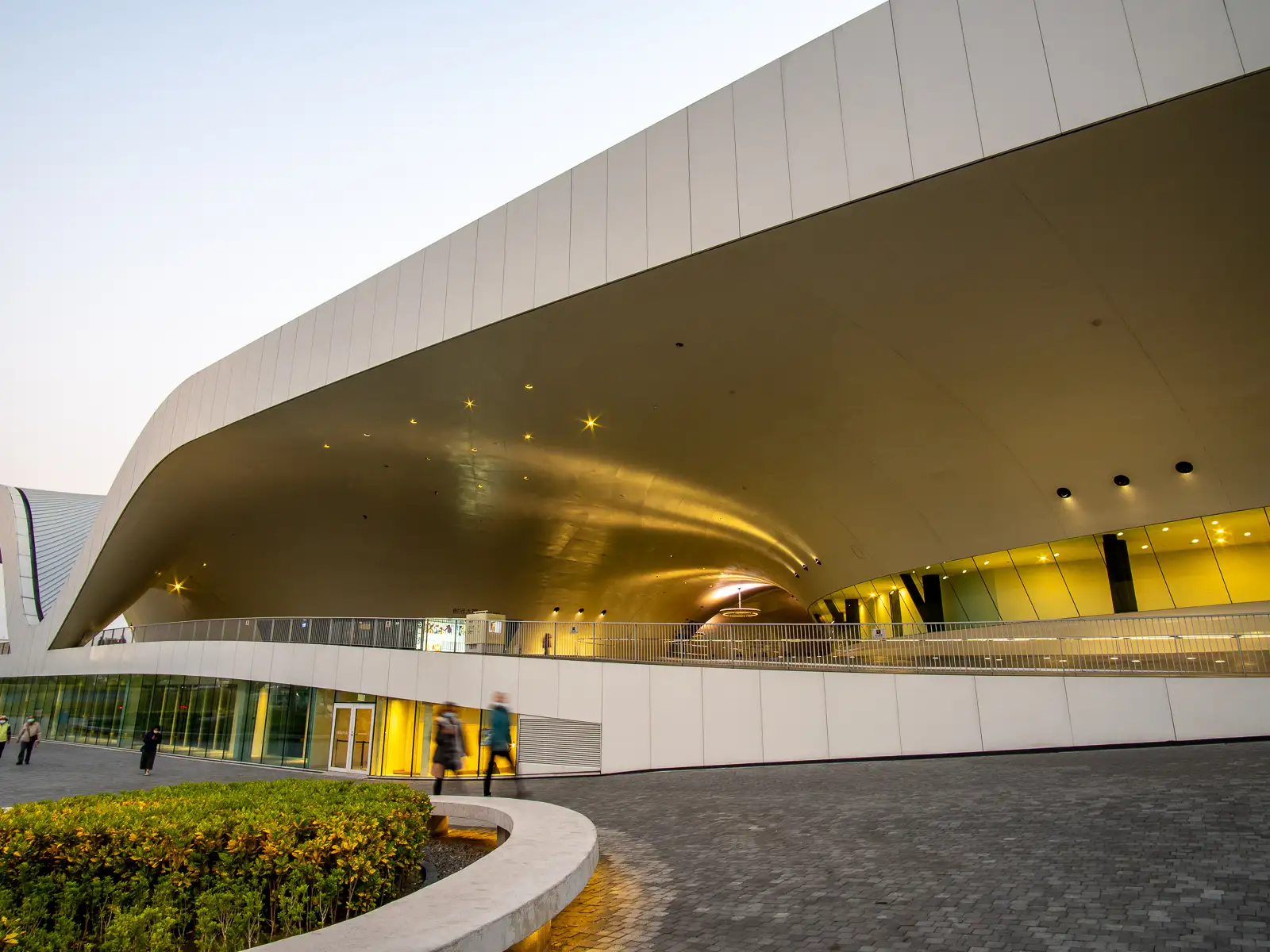
Kaohsiung may not be as large as New York or London, but the city happens to host the world’s largest performing arts center: the National Kaohsiung Center for the Arts Weiwuying. This futuristic 14,000-square-meter performing arts complex, which is located inside the 35-acre Metropolitan Park, features four performance halls, an outdoor amphitheater, and the largest pipe organ in Asia.
The avant-garde yet naturalistic design of the structure blends in with the surrounding nature, and the design itself is open air, meaning the public can freely walk through the complex’s atriums and walkways.
Rainbow Church
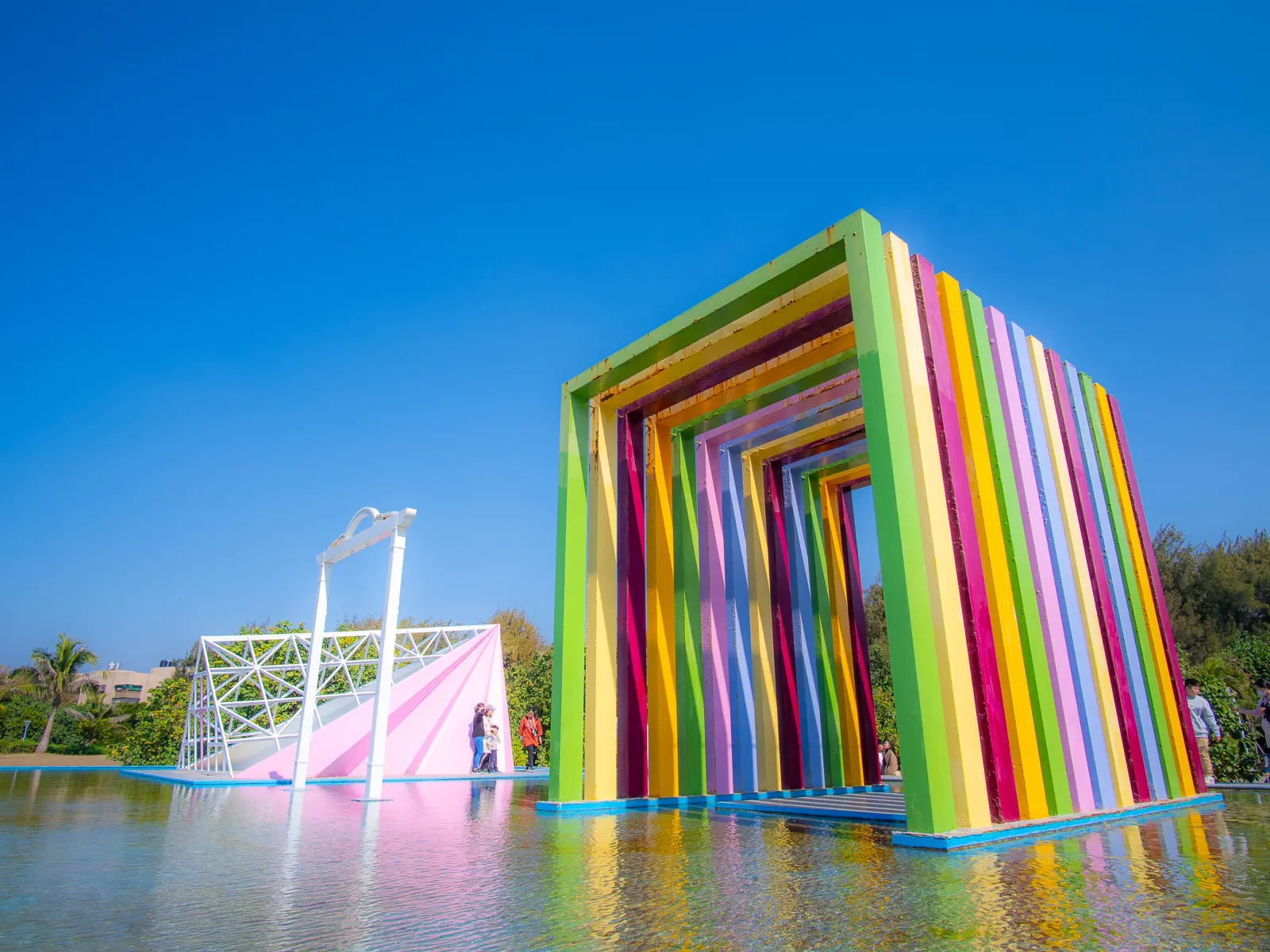
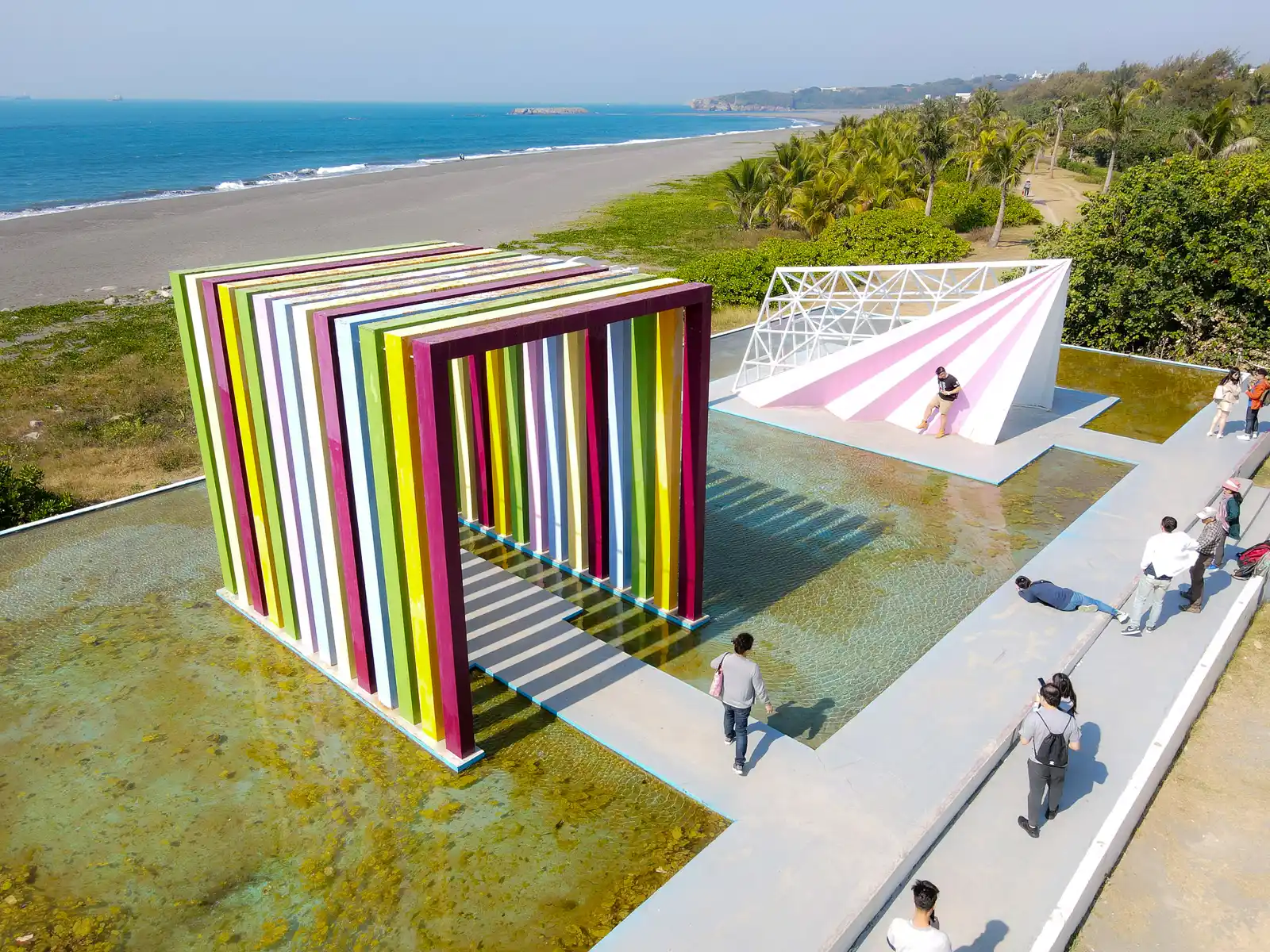
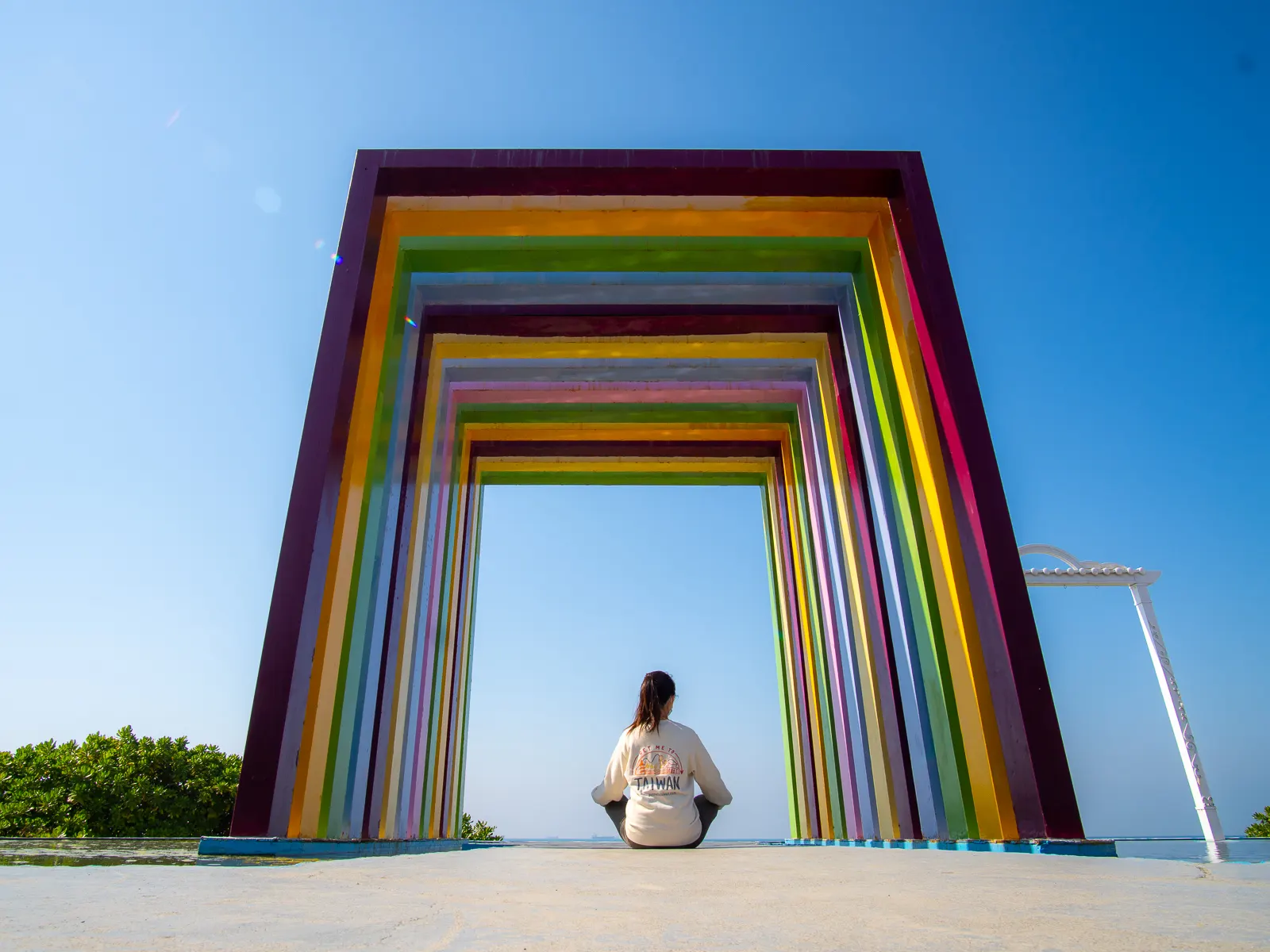
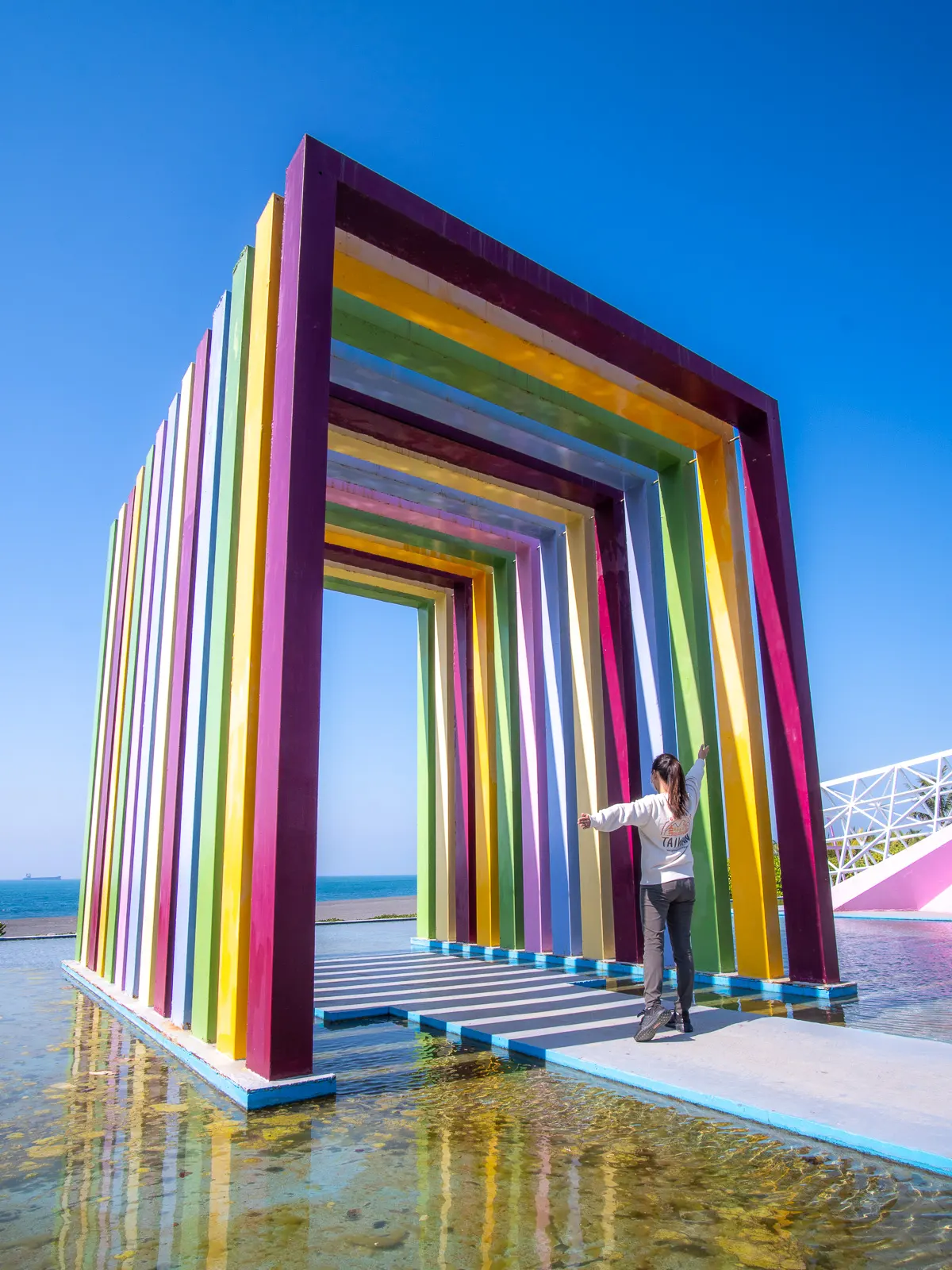
Situated at the southern end of Cijin Beach, and adjacent to Cijin Shell Museum, Cijin Rainbow Church has been hailed as “the perfect spot for a selfie”, and is definitely one of the most instagrammable locations on Cijin Island*.
This colorful contemporary art installation is composed of several vibrantly colored steel arches built over a shallow pool of water. When there is no wind, the flat water will create beautiful reflections of the horizon, offering plenty of opportunities for creative photography.
* Cijin (also often spelled Qijin and Chijin)
Ruifeng Night Market
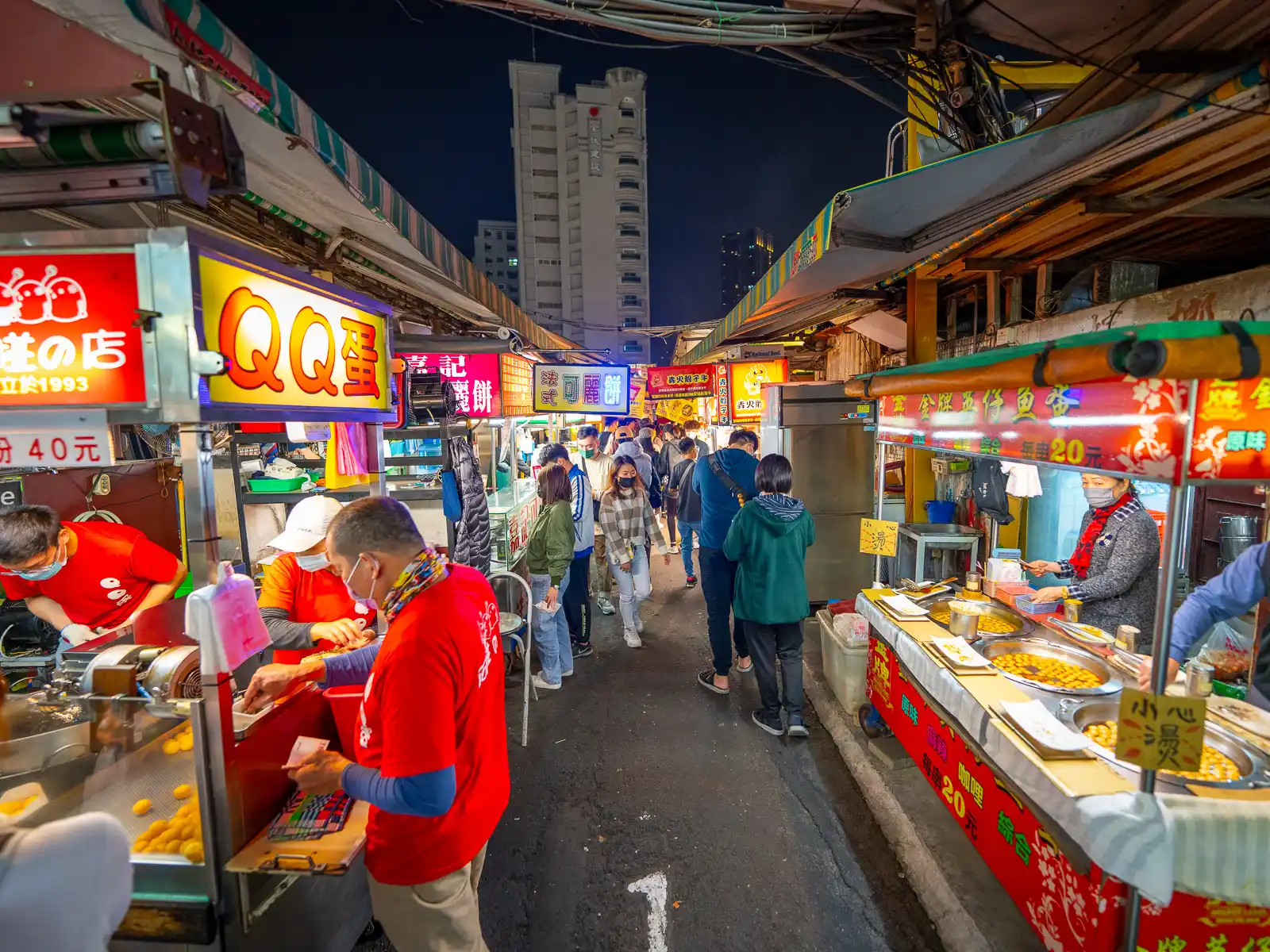
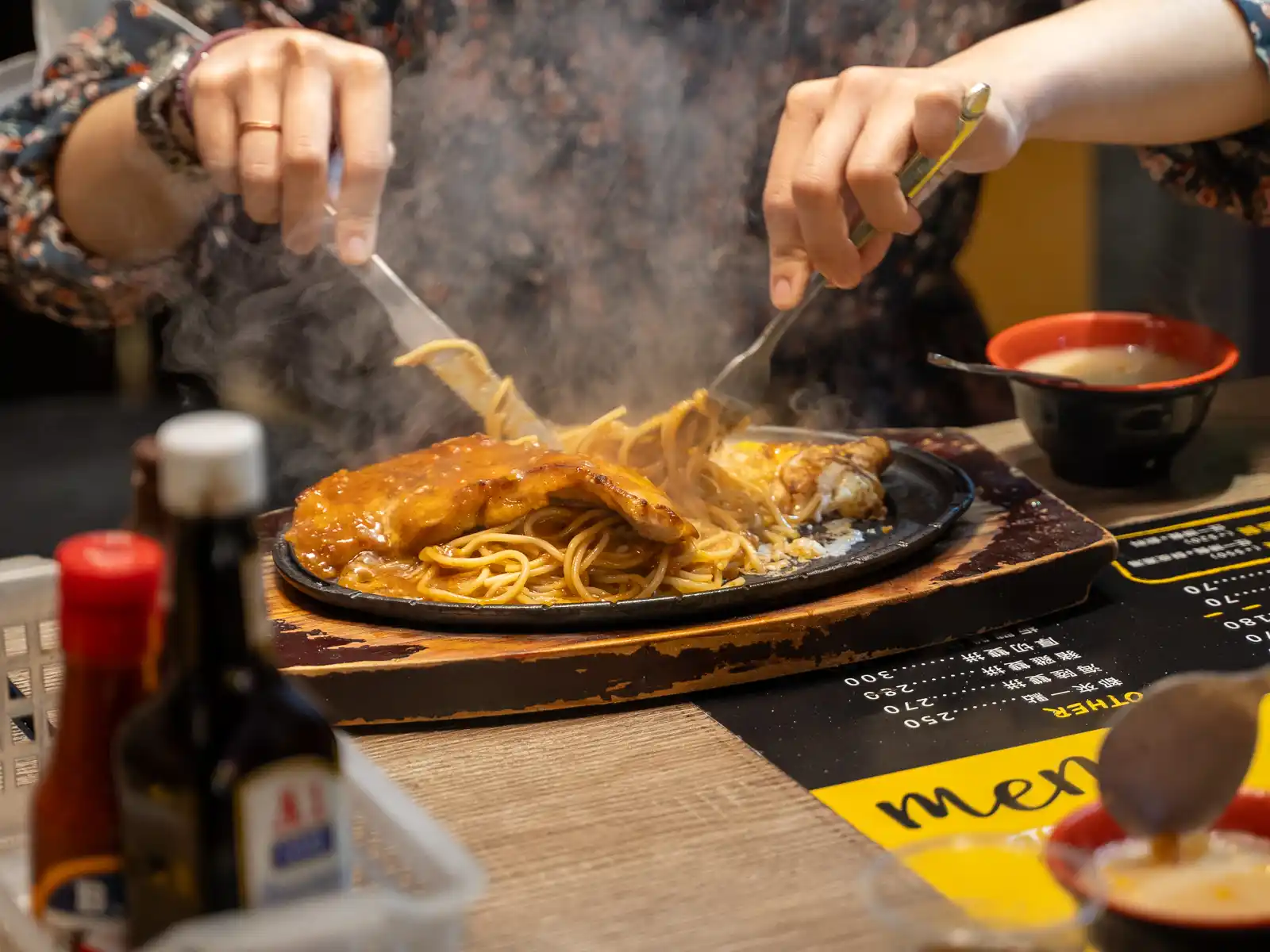
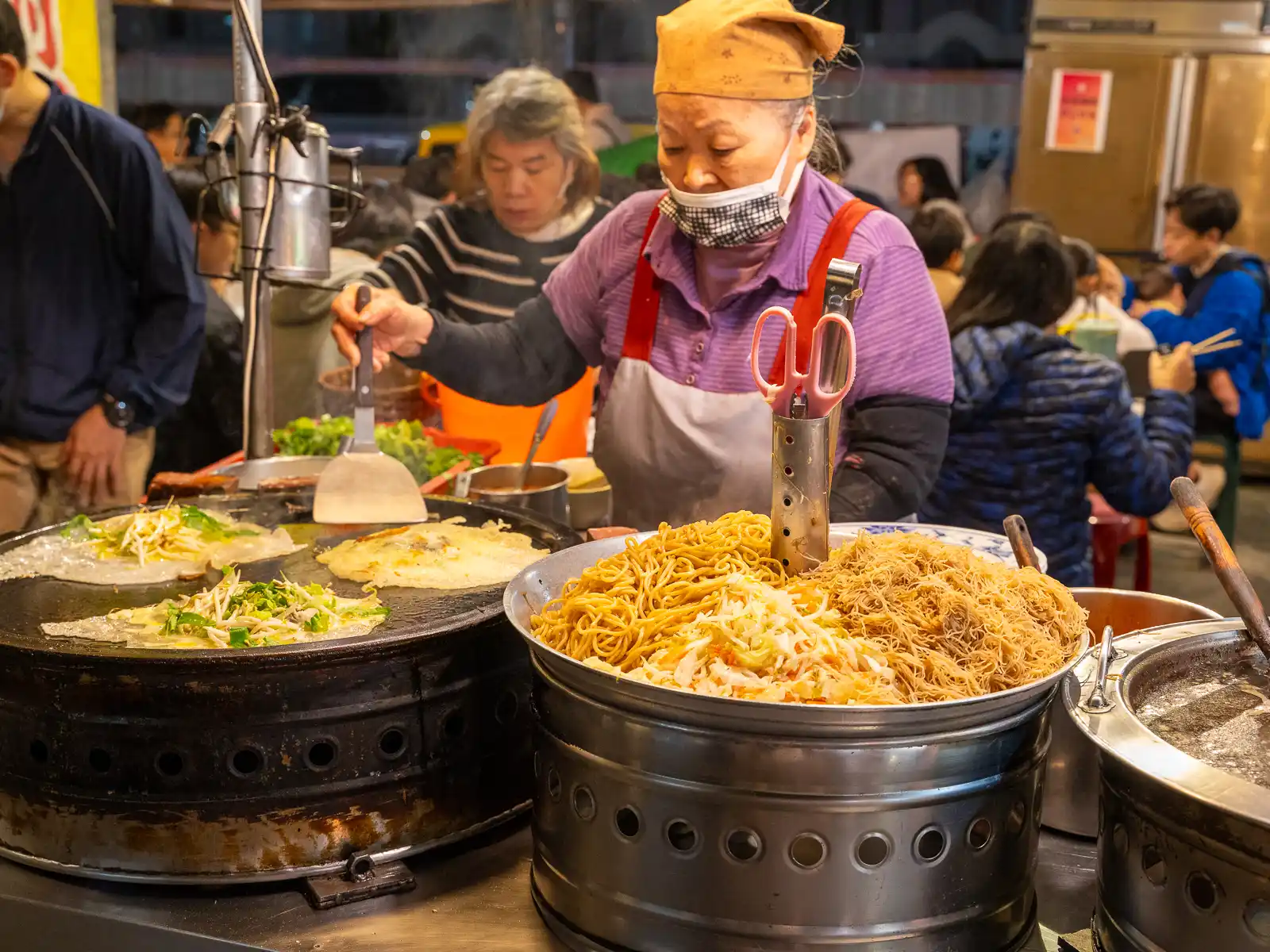
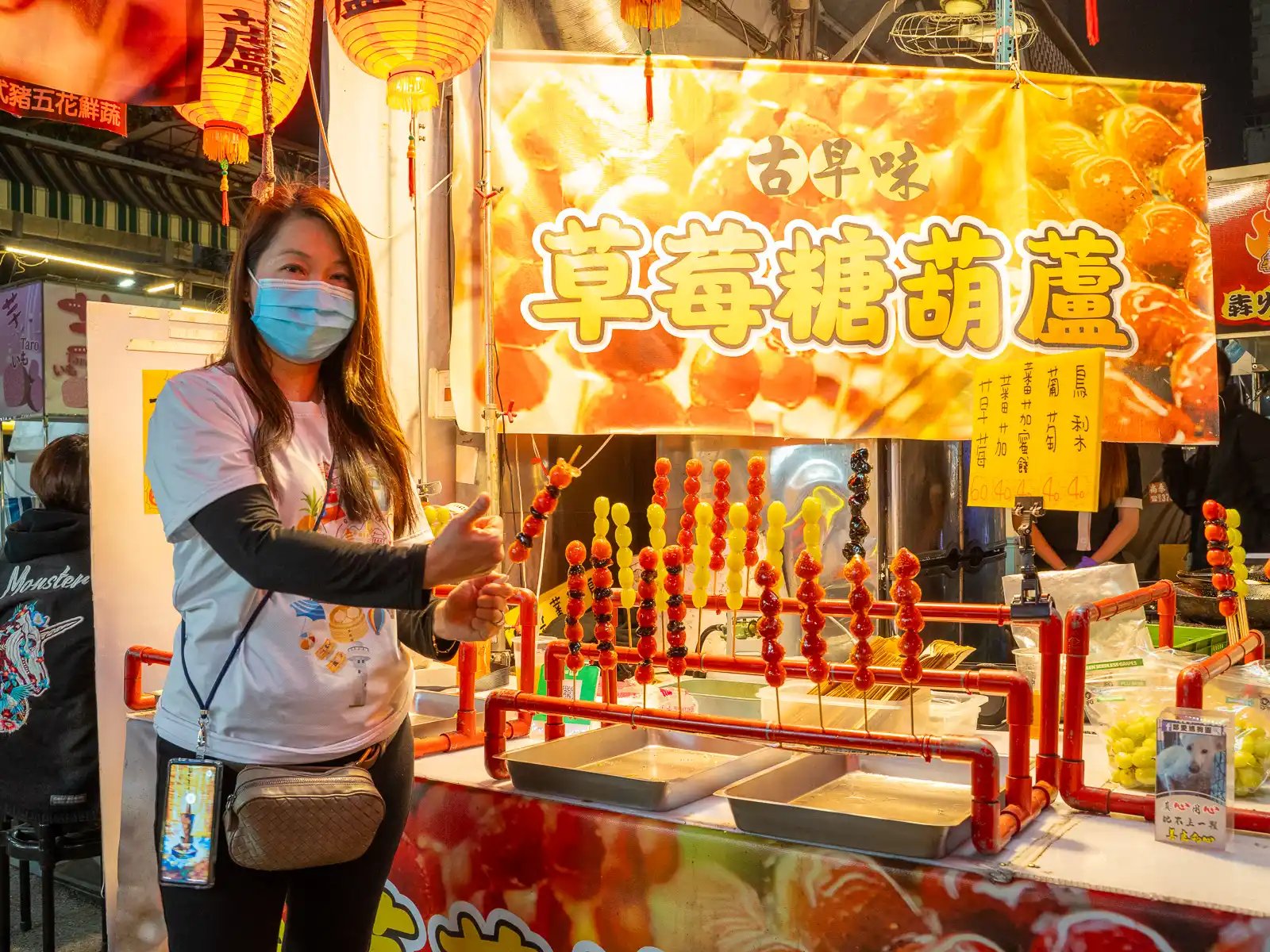
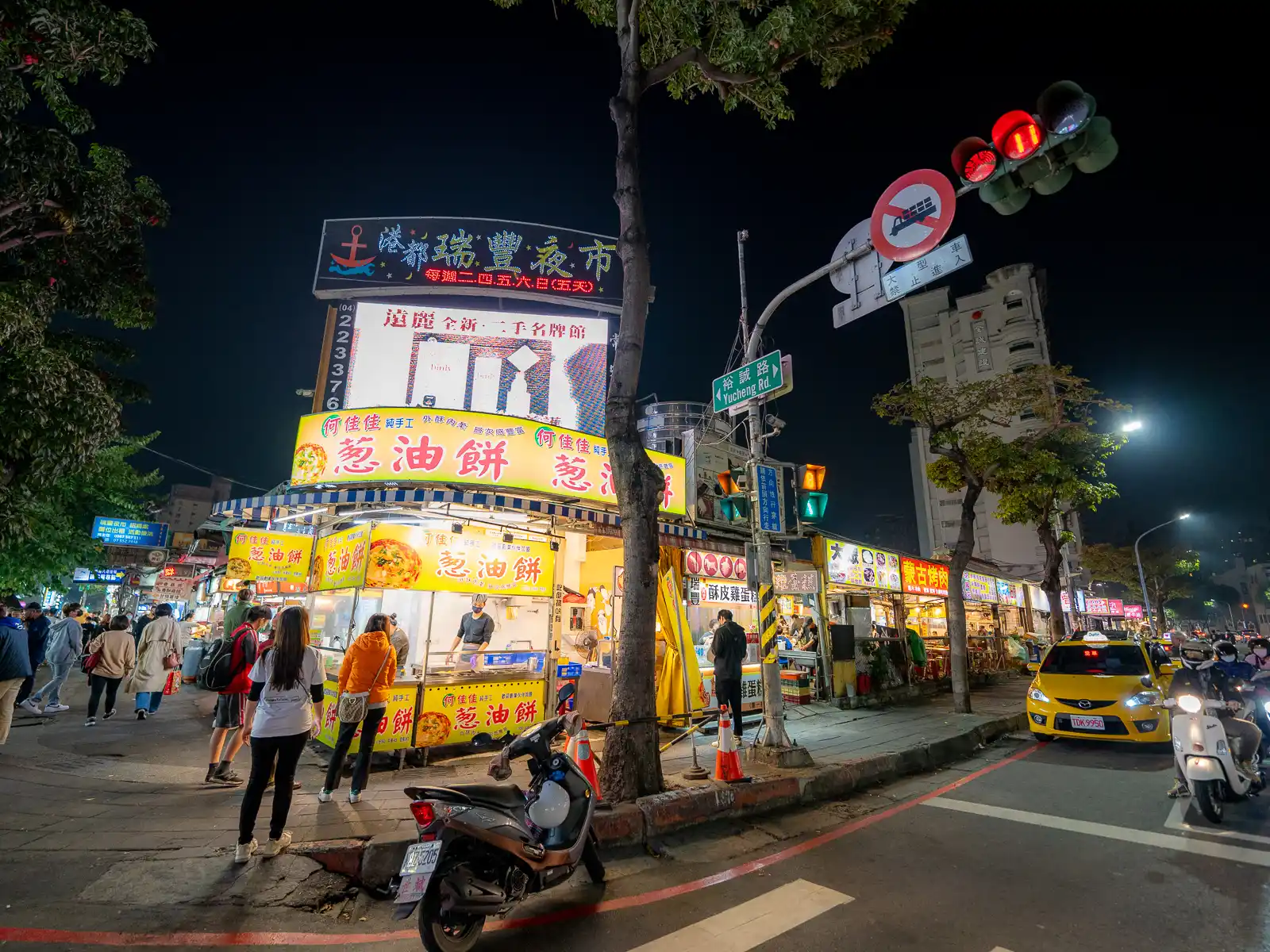
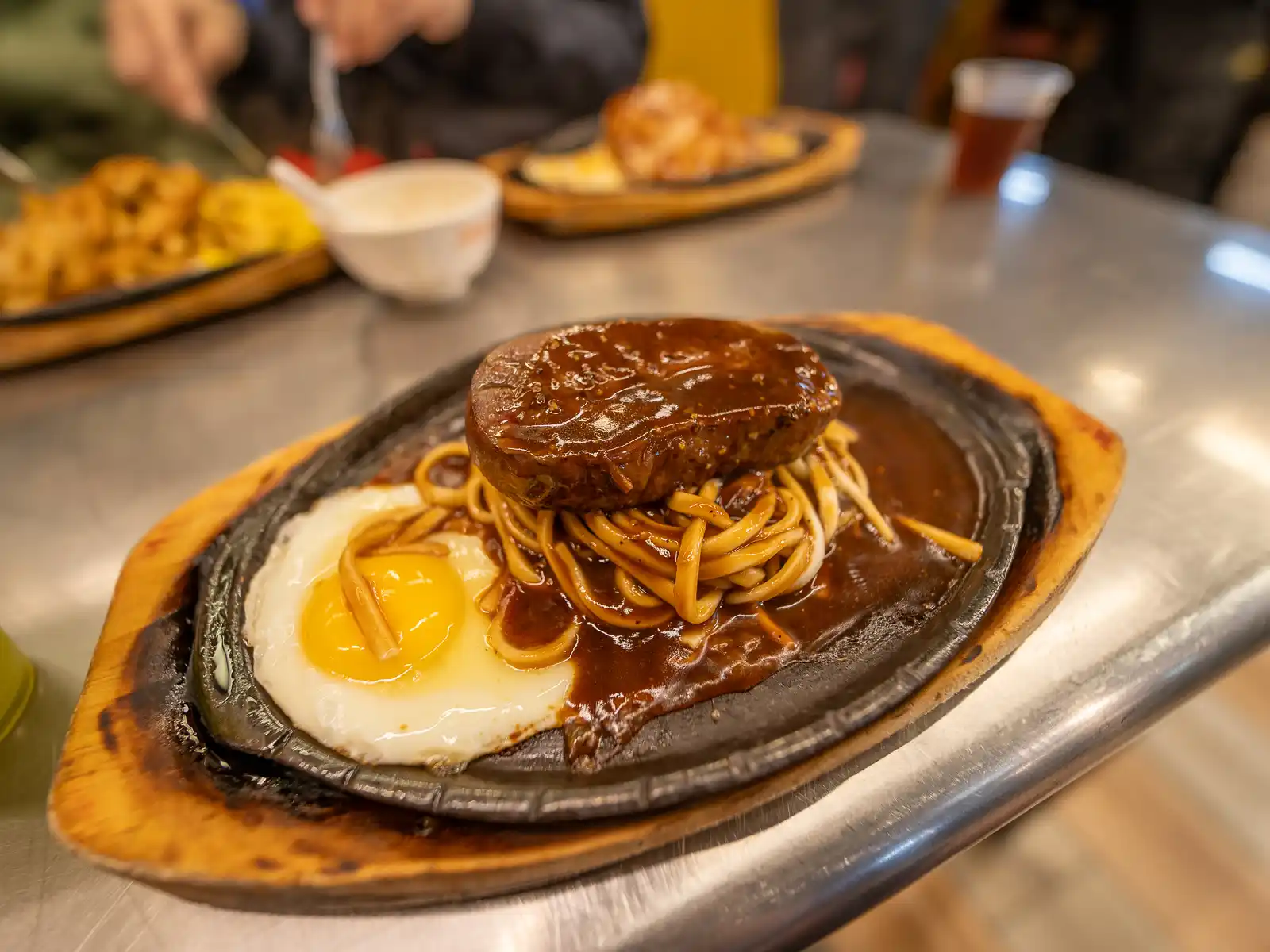
With hundreds of stalls, Ruifeng Night Market, located just south of Lotus Lake in Kaohsiung’s Zuoying District, stands as one of Taiwan’s largest traditional night markets. It is easily the most popular market in Southern Taiwan and we have also included it on our list of Top 5 Night Markets in Taiwan.
Food options are easily the most diverse of any night market and include traditional Taiwanese fare, new innovative and experimental flavors, and imported international dishes such as German pig knuckle and Turkish kebabs.
Additionally, Ruifang Night Market offers a full selection of Taiwanese night market “carnival games”. The market opens at around 5PM and operates until well past midnight with the largest crowds accumulating between 8-11PM.
Kaohsiung Light Rail & Mass Rapid Transit (MRT)

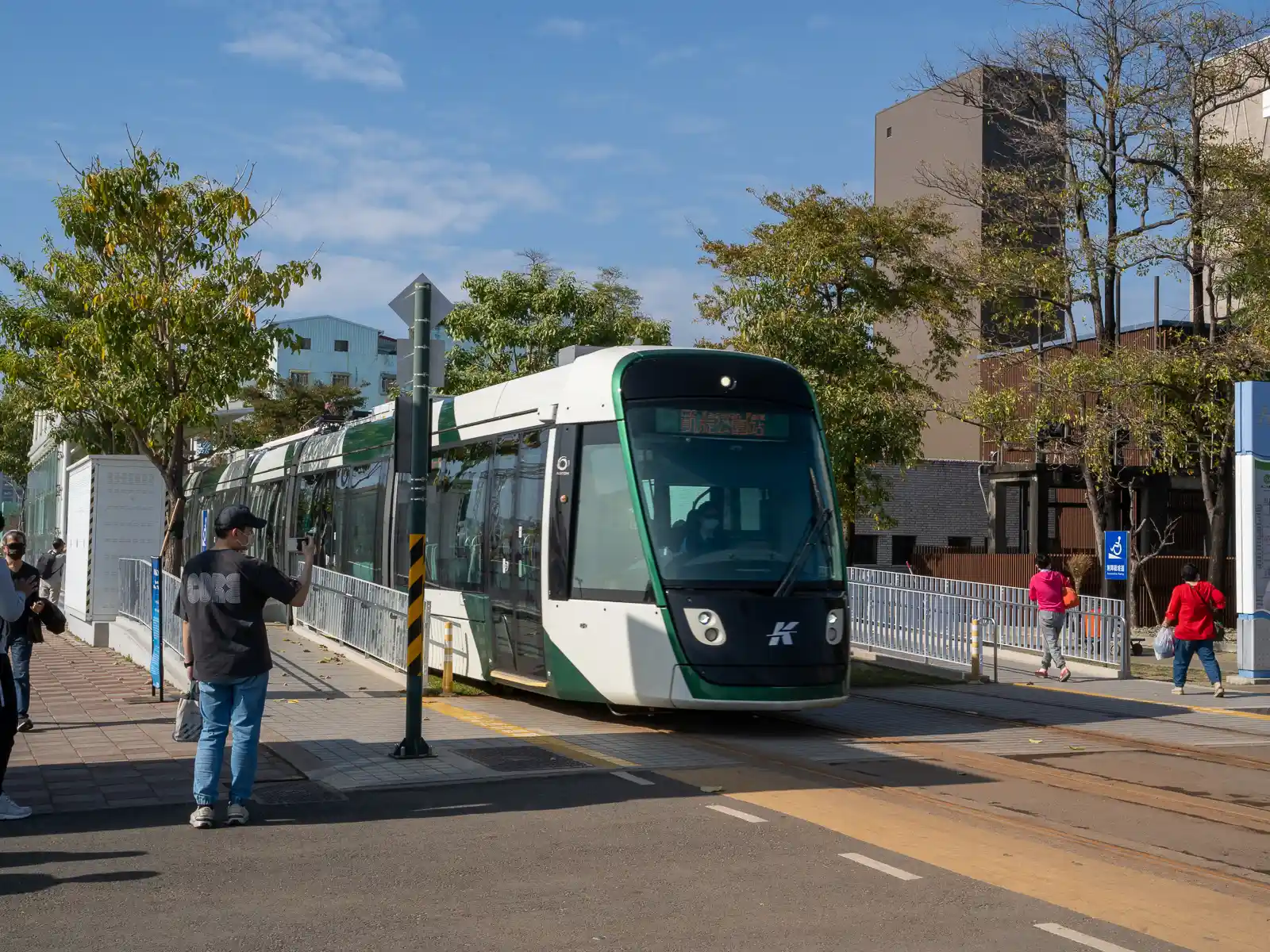

Kaohsiung operates a Circular Light Rail as well as a subway system (“MRT”) that together make traveling through Kaohsiung more efficient than ever. The Orange and Red MRT lines are meant to offer efficient cross-town service, while the Circular Light Rail offers more stops and links areas that the cross-shaped MRT system doesn’t reach. Both MRT lines intersect in the center of Kaohsiung at the beautiful and iconic Formosa Boulevard Station.
Note that the Red MRT Line connects Kaohsiung’s main transport hubs, including Kaohsiung Main Station (“TRA”), the High Speed Rail (“HSR”) Station at Zuoying, and Kaohsiung International Airport, as well as a number of interesting neighborhoods.
On the other hand, the Orange MRT Line cuts across Kaohsiung horizontally, primarily linking some of the main attractions mentioned above, including Weiwu Mimi Art Village and the National Kaohsiung Center for the Arts, with the harbor area that includes Sizihwan and Pier 2 Arts Center. Ride the Orange line to Sizihwan to transfer to the Circular Light Rail.
For more information, check out this complete map of Kaohsiung’s Metro System.

